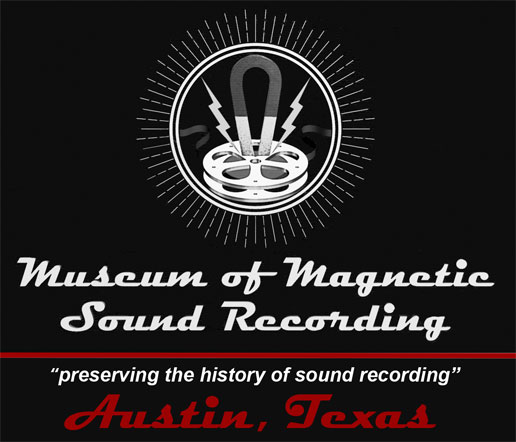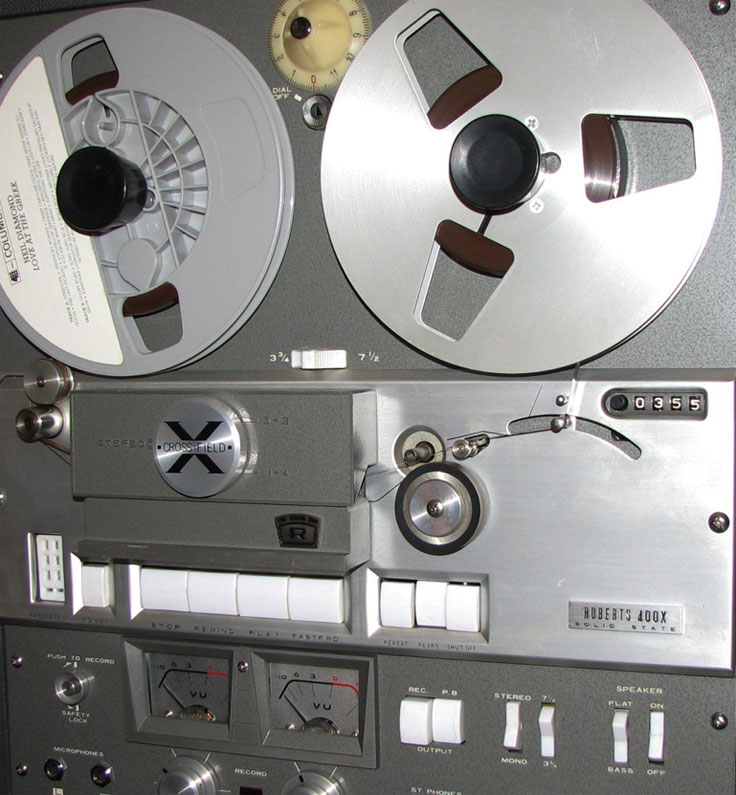Survey Results • News coverage #1 News coverage #2 • view overview video of tape recorder collection • mobile video • more info
Interviews and Stories
Preserving the stories of significant individuals in sound recording generally and magnetic recording specifically is a major project of MOMSR. The Museum’s goal is to document the stories of those persons who contributed significant inventions, manufactured equipment and who engineered and produced audio recordings, especially in the areas of music, broadcast, film/video and science. These interviews will be available on MOMSR’s web site and in the permanent facility when it is created. These interviews have also been made available to the Audio Engineering Society (AES) and the National Academy of Recording Arts and Sciences (Grammy’s).
The Metzner Family - Esther Metzner, Robert Metzner & Richard Metzner are Founding Members of the Museum of Magnetic Sound Recording
Robert G. Metzner - Califone & Roberts Recorders
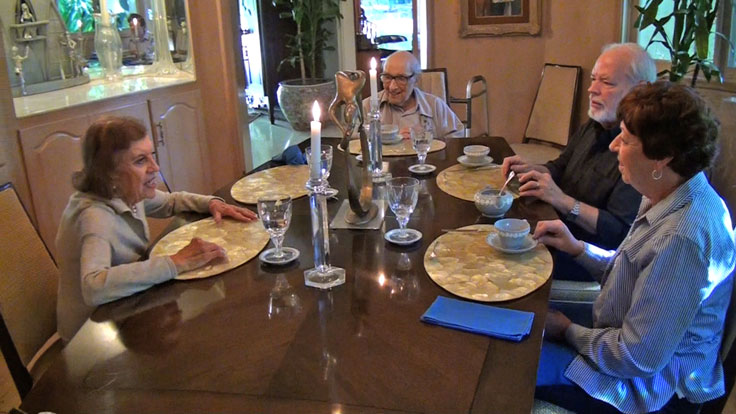
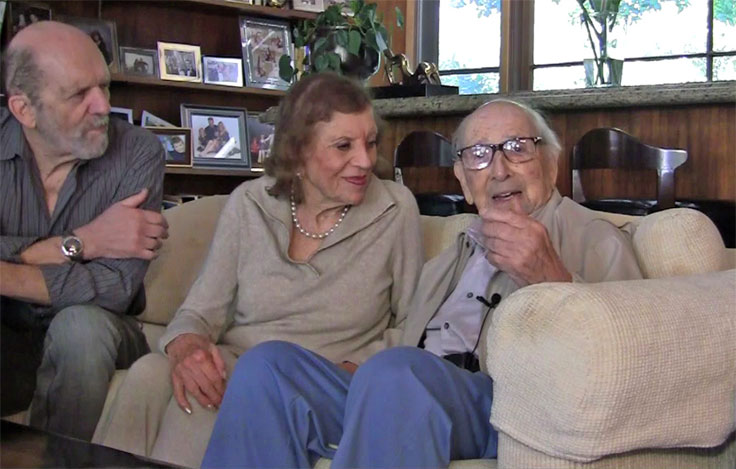 Interview with Robert G. Metzner
Interview with Robert G. Metzner
On December 11, 2012, Chris & Martin Theophilus, Directors for the Museum of Magnetic Sound Recording, interviewed 95 year old Robert G. Metzner in his home in Beverly Hills, California. His son, Dr. Richard Metzner facilitated the interview and Robert Metzner's wife of 72 years, Esther Metzner joined in the interview and hosted lunch.
In the over 2 hour interview we heard about the founding of Roberts Recorders, Califone (a major A/V equipment manufacturer still in business to this day) and the numerous patents Mr. Metzner created. We have segments of the interview available on this web site.
Mr. Metzner shared a wealth of stories about working with Akai (he learned Japanese and made 12 trips to Japan). He said he had supplied an Ampex recorder to Akai and that resulted in the early design similarities. He is as sharp as ever and as we began the interview, we asked he test the audio with 1,2,3. He immediately said 3, 2,1, smiling. We knew we were in for a good interview.
The interview centers around Mr. Metzner's contributions to magnetic sound recording through Califone, Inc. and Roberts Recorders, Inc. There are brief video clips on this page from the interview. The entire video will be available from the Museum of Magnetic Sound Recording in the future.
Robert G. Metzner built his first crystal radio set at age 9. He got his ham radio license and later he acquired his First Class Radio Telephone license at age 16. VIDEO
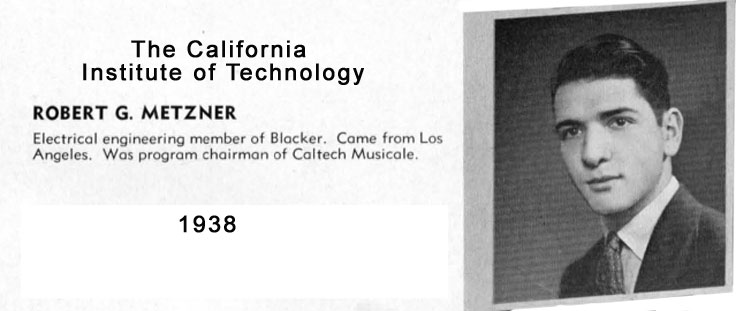 Robert G. Metzner (pictured in Caltech's 1938 annual) majored in electrical engineering at Caltech. He worked his way through university going to class in the morning and then working for the Hadley Transformer Company in the afternoons. He then was hired by Allied Phonograph and Records.
Robert G. Metzner (pictured in Caltech's 1938 annual) majored in electrical engineering at Caltech. He worked his way through university going to class in the morning and then working for the Hadley Transformer Company in the afternoons. He then was hired by Allied Phonograph and Records.
He founded Pacific Sound Equipment Company and provided portable 16 inch transcription turntable players to salesmen who marketed their 16 inch discs to the film industry. When WW II began his company provided transcription turntables and other A/V products to the US military during WW II. The company ceased to exist when the war ended. VIDEO

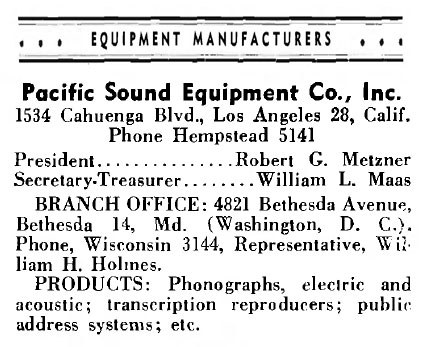

After the war, Pacific Sound Equipment Company held such a large inventory of military style turntables that the company had to go into receivership.
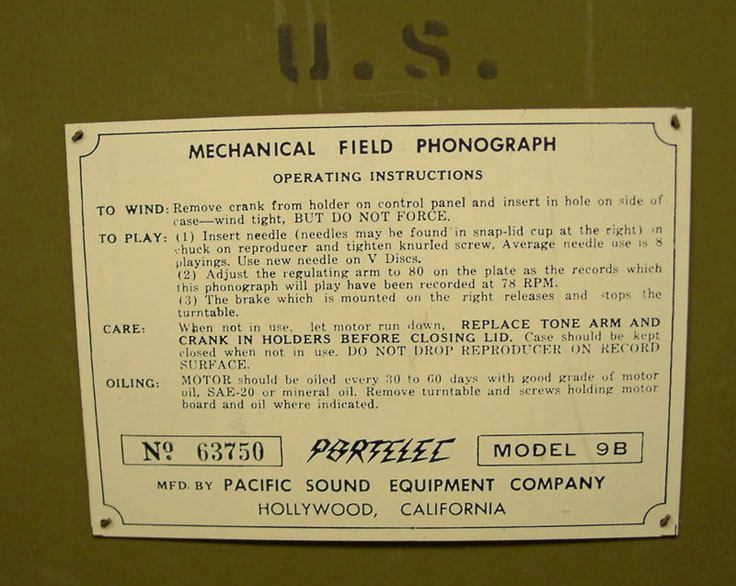

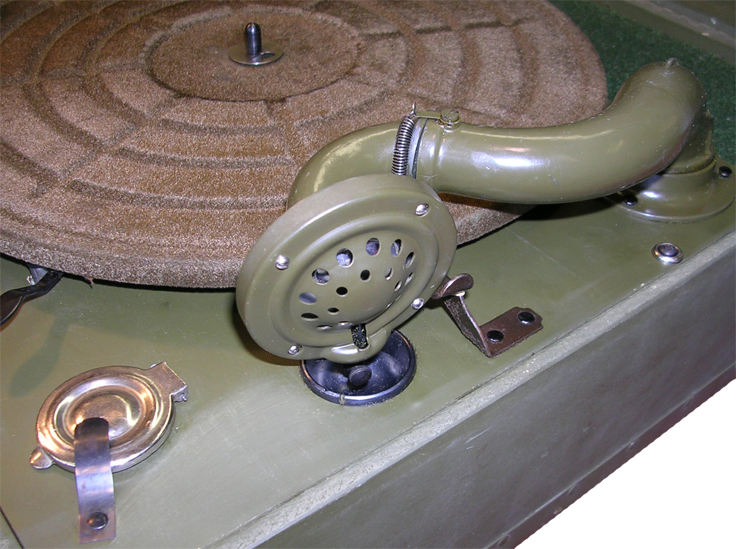
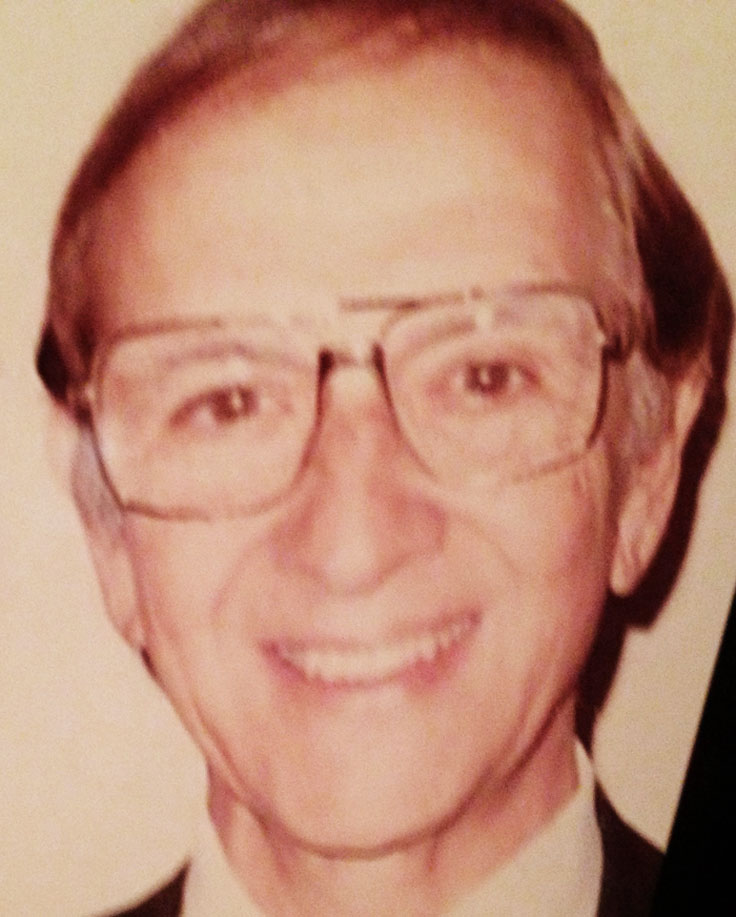 Metzner Founds Califone
Metzner Founds Califone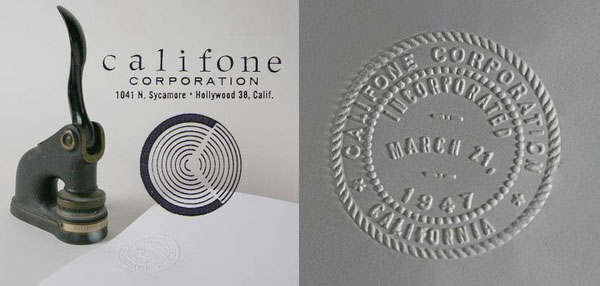
On March 21, 1947 with backing from his mother and a friend, Bill Maas, Robert Metzner (pictured left in the 1940's) founded Califone Corporation which later became the educational products division of Roberts Recorders. VIDEO
Califone is still in business today and manufactures state-of-the-art consumer audio components and, was the first U.S. company to offer a reel-to-reel tape recorder and solid state radio tuners to the general public. Metzner's Califone company provided transcription turntables. VIDEO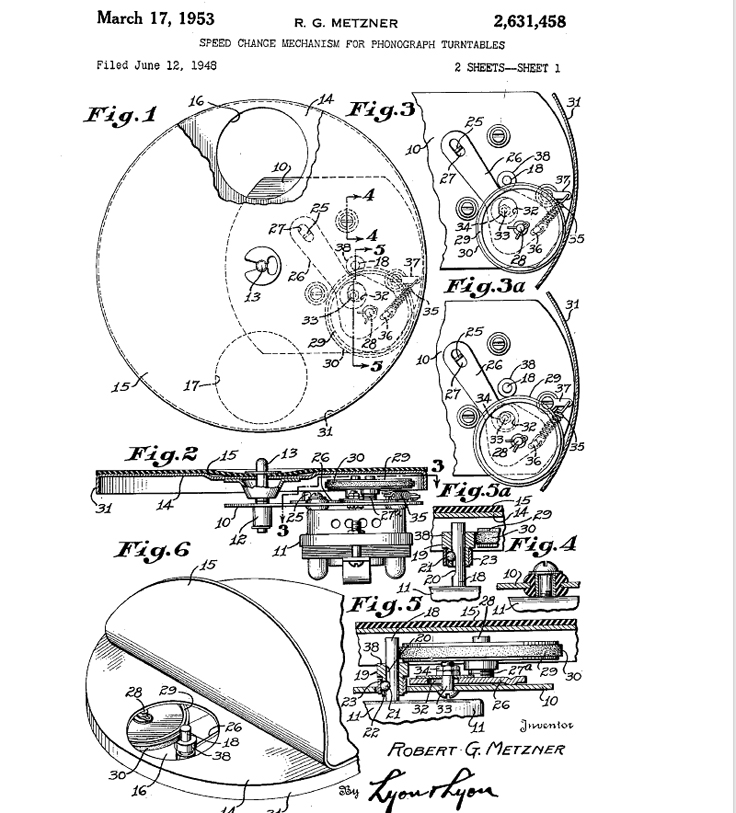
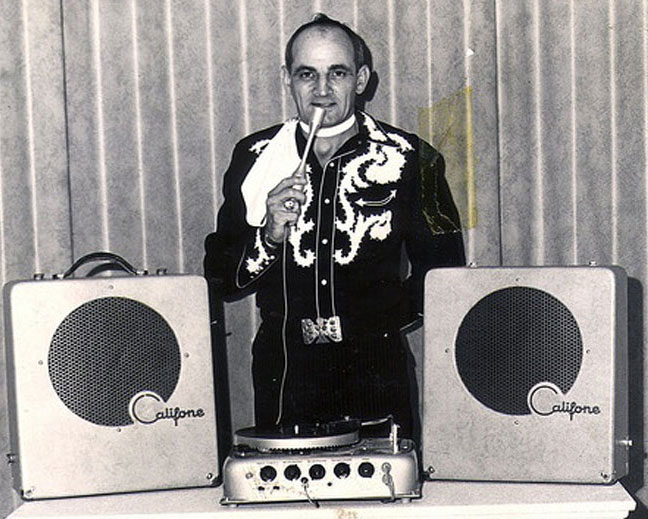
To help Square Dancing groups popular at the time, Robert G. Metzner in 1953 invented and patented (right) a variable speed control for the turntables. VIDEO
Here are some photos from the early Califone factory from Califone International.
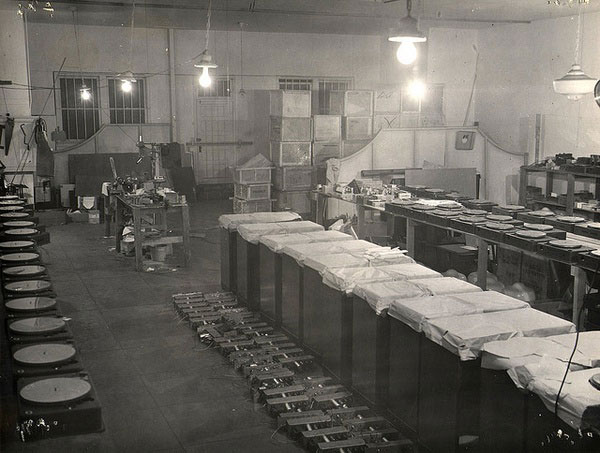
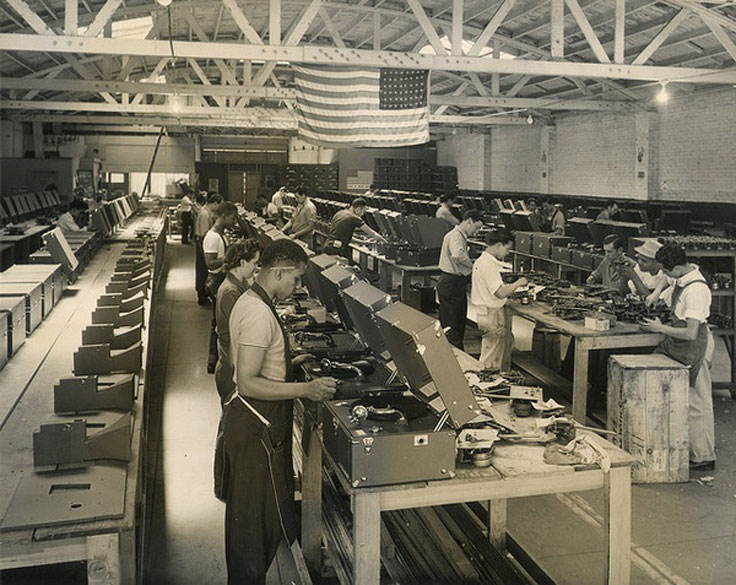
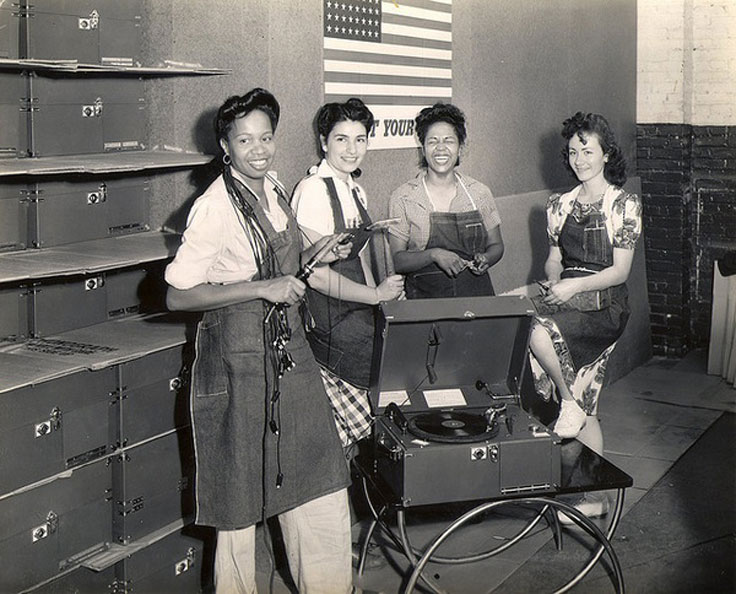
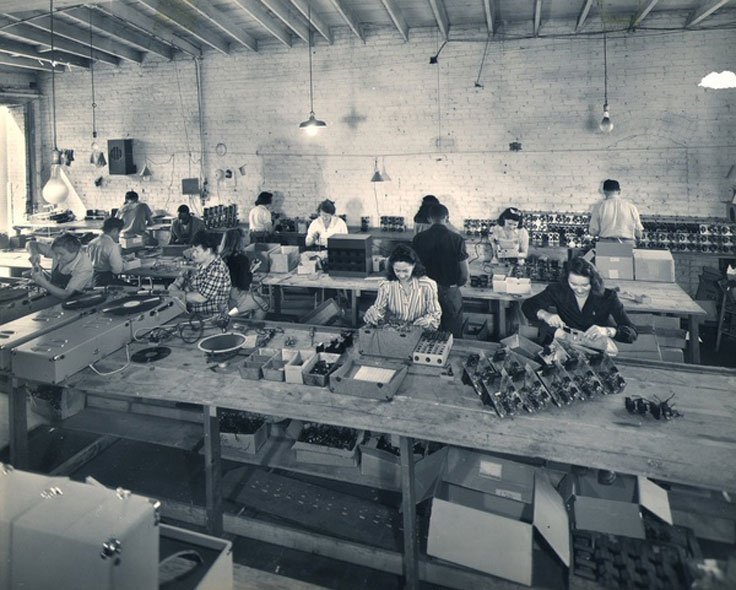
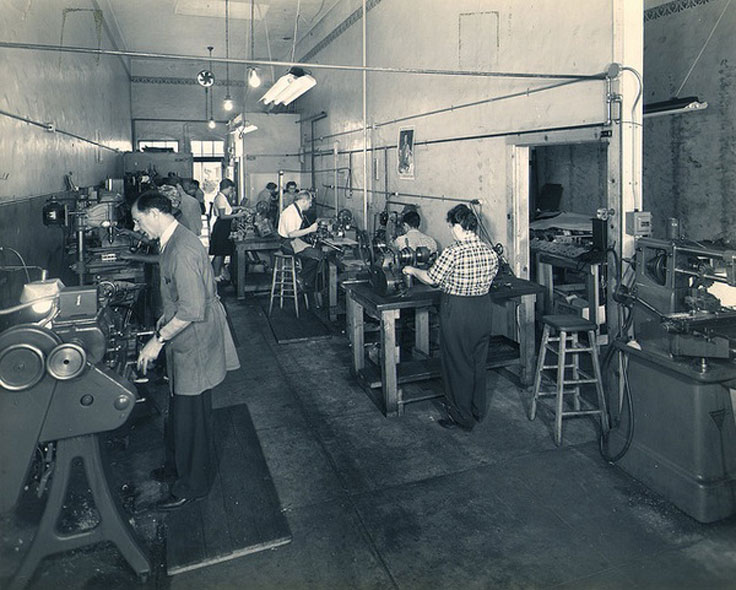
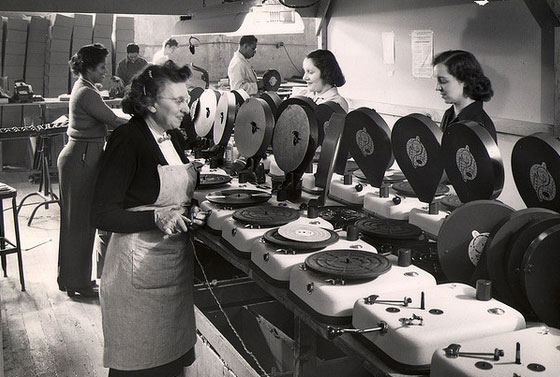
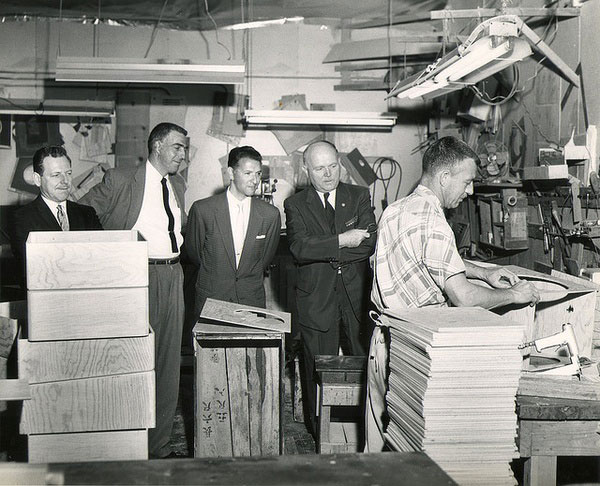
photos - Califone International
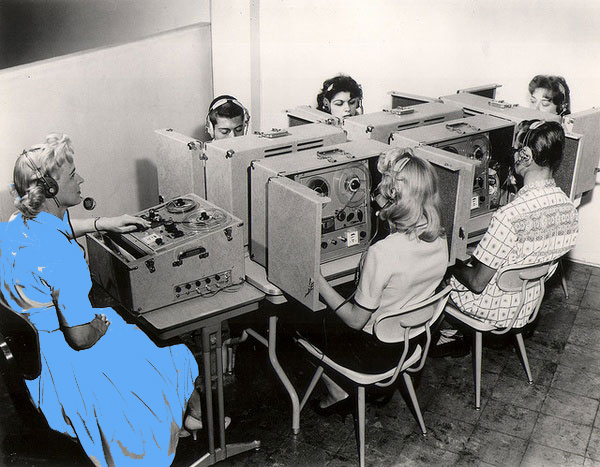
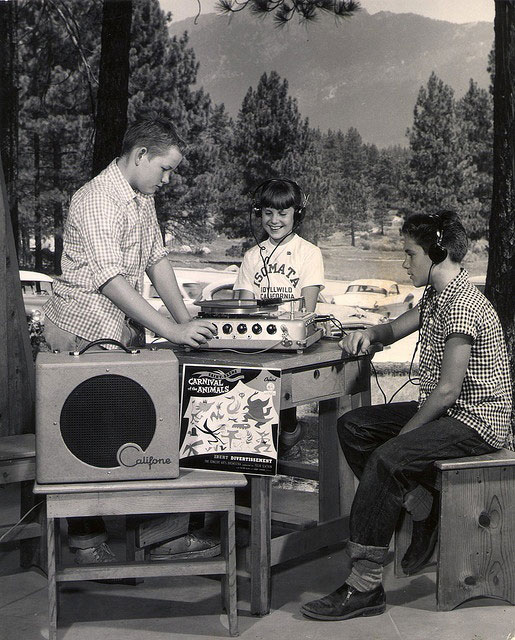
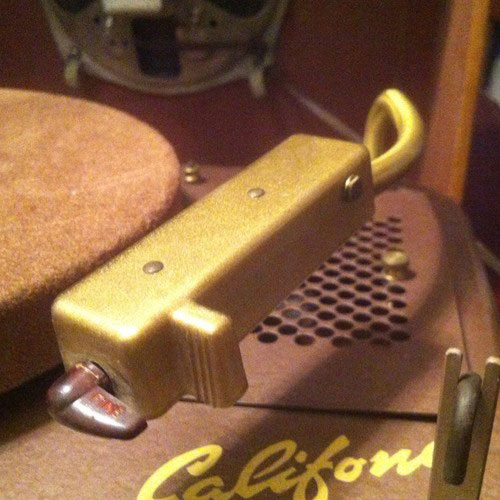
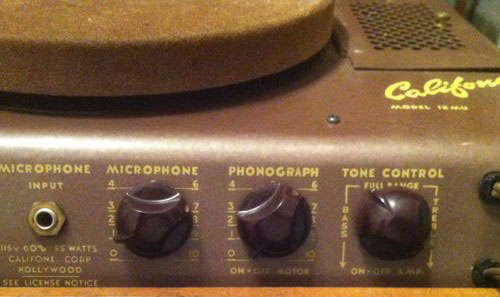
Califone products in use VIDEO
Roberts Electronics, Inc.
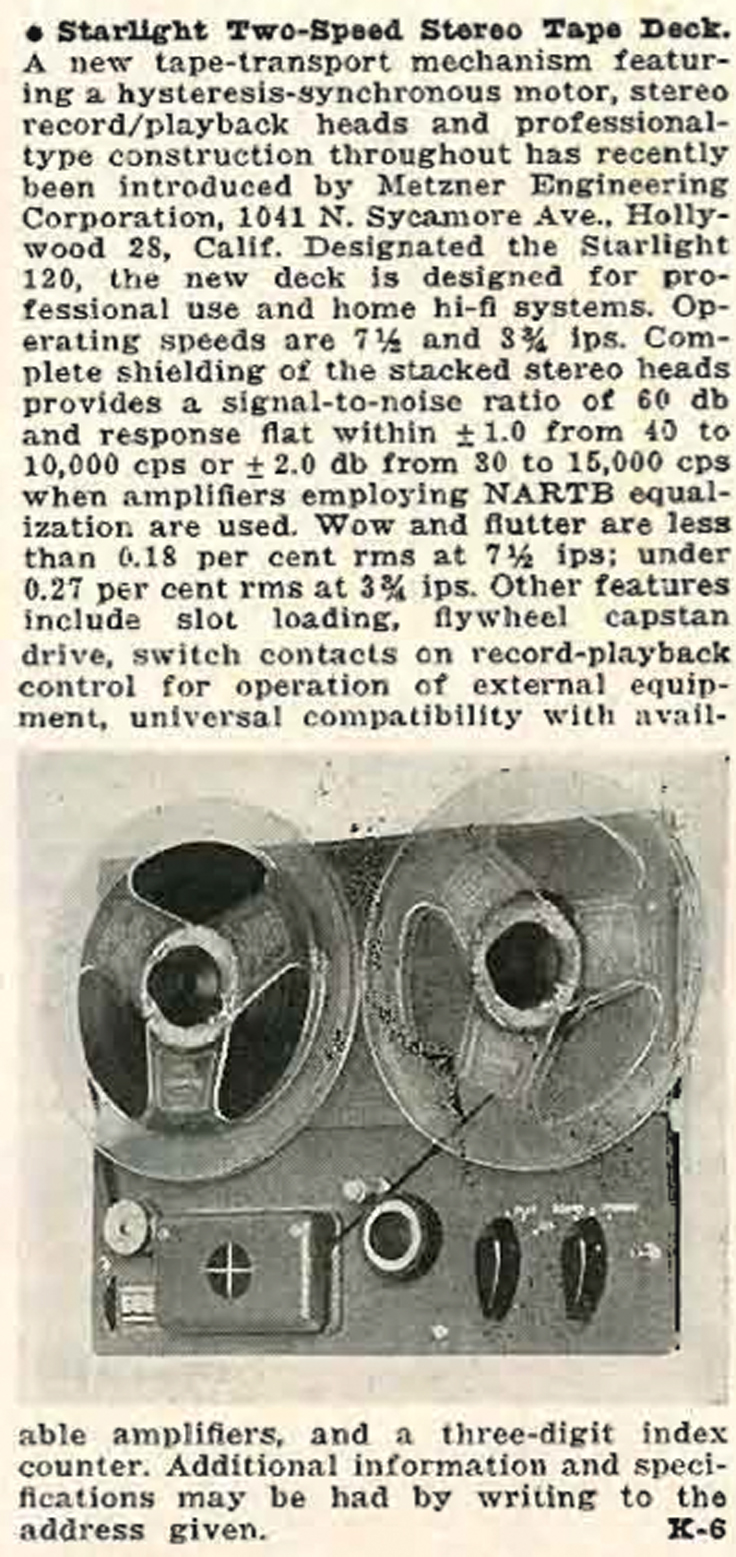
This 1958 announcement in the Audio Engineering magazine (left) was the first tape transport produced by Robert Metzner. It was called the "Starlight" and a turntable by the same name was also released by Metzner Electronics. The summary states the tape deck was manufactured by the Metzner Electronics Corporation, 1041 Sycamore Ave., Hollywood, CA., which was prior to the use of the "Roberts" name (created by and combining the names of Robert Metzner and Robert Craig).
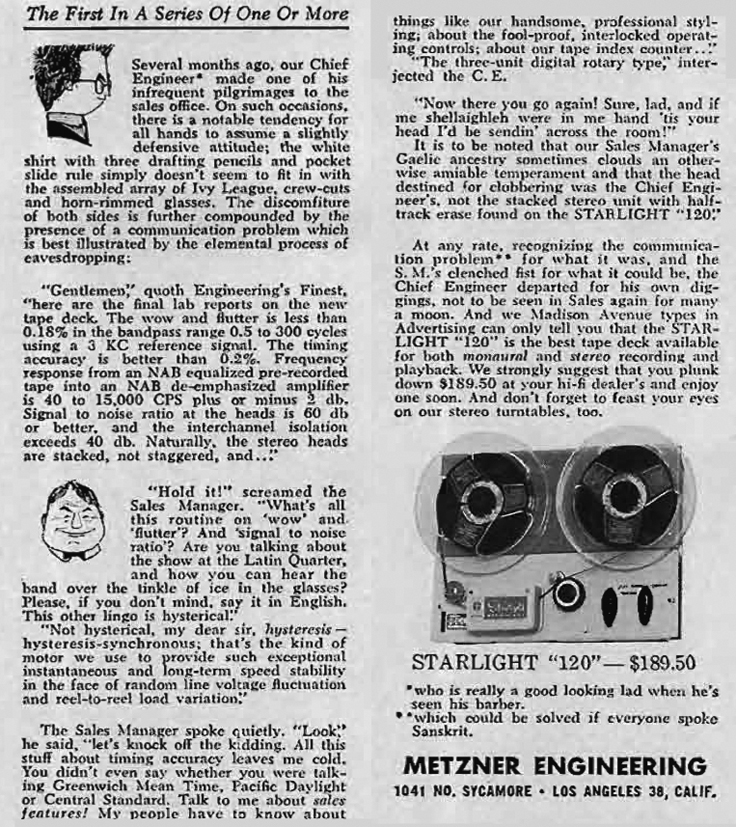
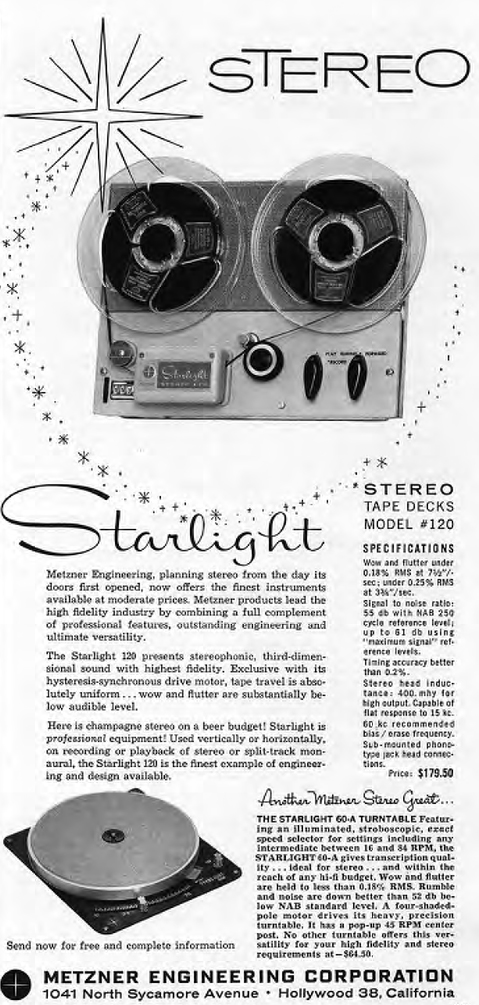

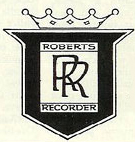
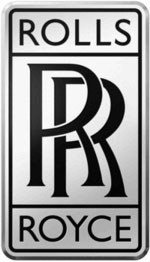
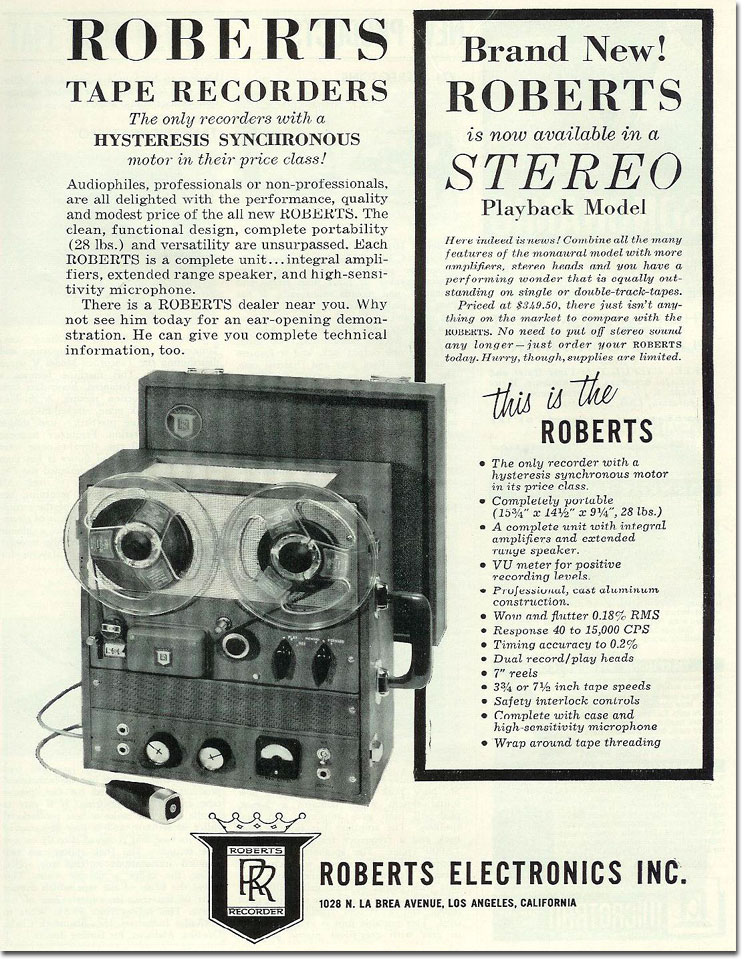 Robert G. Metzner and Robert Craig founded Roberts Electronics, Inc. Robert Craig's farther Talton Craig was Robert G. Metzner's Califone distributer. Talton Craig enabled Robert Metzner to acquire a wide distribution network for Califone & Roberts. VIDEO When Robert G. Metzner and Robert Craig began building Roberts Recorders, their first logo was double "Rs" and British solicitors/attorneys contacted them due to the similarity to the Rolls Royce logo. (1958 Roberts Electronics ad - right) VIDEO
Robert G. Metzner and Robert Craig founded Roberts Electronics, Inc. Robert Craig's farther Talton Craig was Robert G. Metzner's Califone distributer. Talton Craig enabled Robert Metzner to acquire a wide distribution network for Califone & Roberts. VIDEO When Robert G. Metzner and Robert Craig began building Roberts Recorders, their first logo was double "Rs" and British solicitors/attorneys contacted them due to the similarity to the Rolls Royce logo. (1958 Roberts Electronics ad - right) VIDEO
 Robert Metzner's relationship with Akai first started around 1953 with a turntable that was brought in for repair to Califone. Robert's brother-in-law, who was working for him at the time said there was a very unusual motor in the player. Robert Metzner noted the numbers of the motor and found they were registered to Saburo Akai. Mr. Metzner contacted Akai and said he would like to know if they were making these motors and if not, could he have the tooling to make them. If they were making them, could he get their distributorship. Akai sent Robert Metzner a brochure about the motors they were manufacturing. A relationship developed and Akai provided motors for some of the Califone products.
Robert Metzner's relationship with Akai first started around 1953 with a turntable that was brought in for repair to Califone. Robert's brother-in-law, who was working for him at the time said there was a very unusual motor in the player. Robert Metzner noted the numbers of the motor and found they were registered to Saburo Akai. Mr. Metzner contacted Akai and said he would like to know if they were making these motors and if not, could he have the tooling to make them. If they were making them, could he get their distributorship. Akai sent Robert Metzner a brochure about the motors they were manufacturing. A relationship developed and Akai provided motors for some of the Califone products.
When Akai first sent tape recorder demos to Roberts Electronics, Metzner said they were of very poor quality and he recommended they aspire for the quality of Ampex. He sent an Ampex 600 to Akai and they actually copied the basic design. The early Akai and Roberts Recorders had the similar look, however not the electronics and mechanics of Ampex. VIDEO
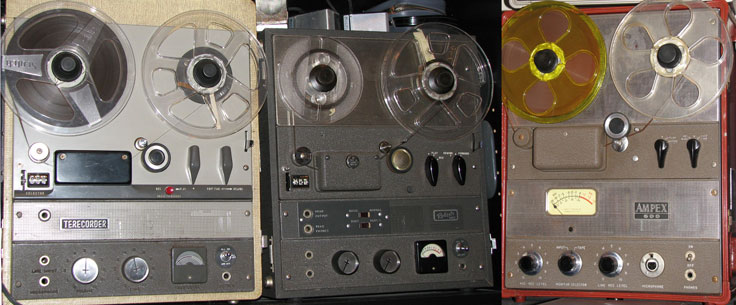
Roberts Electronics, Inc. negotiated an arrangement with Akai wherein Akai would build the machines to Roberts specs, they would be shipped from Japan to the US where Roberts would inspect every unit before it went out to sales. Further, Robert Metzner negotiated a contract that enabled Roberts Electronics to be the sole North American distributor for the recorders. Akai sold the same, or similar models to the rest of the world under the Akai name and paid royalties to Metzner. This lasted until 1972 when Akai entered the US market. Robert Metzner learned the Japanese language and made 12 trips to Japan beginning in 1958, forming a strong relationship with Saburo Akai (who founded Akai in 1929) until Saburo Akai's death in 1973. VIDEO 1 VIDEO 2
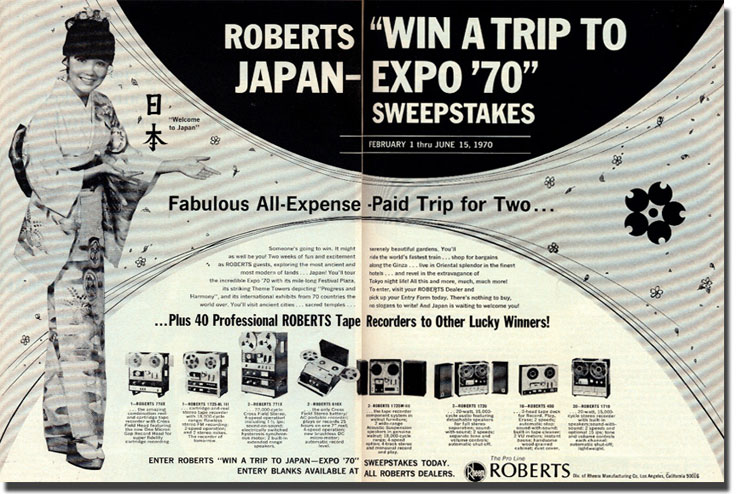
Roberts celebrity endorsements
In the 1960's Roberts Recorder ads displayed a high number of significant celebrities endorsing the brand. Robert Metzner said that as they were based in Hollywood, it would be good to profile their recorders with known stars. His first indorsement came from Rudy Vallee. VIDEO
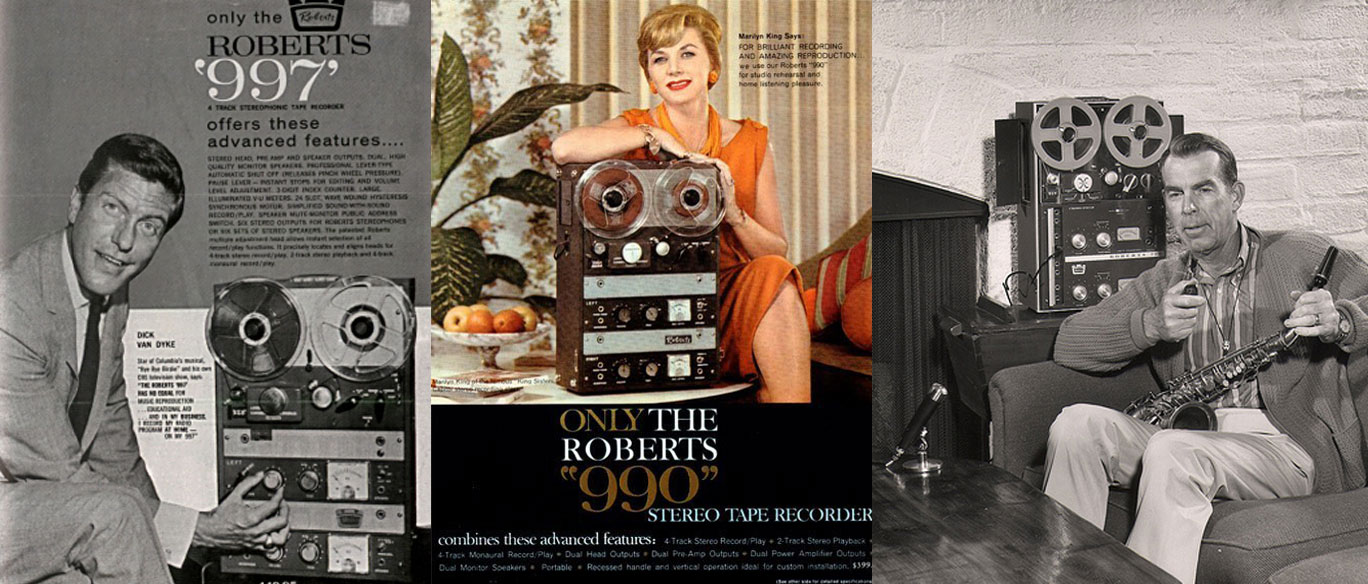
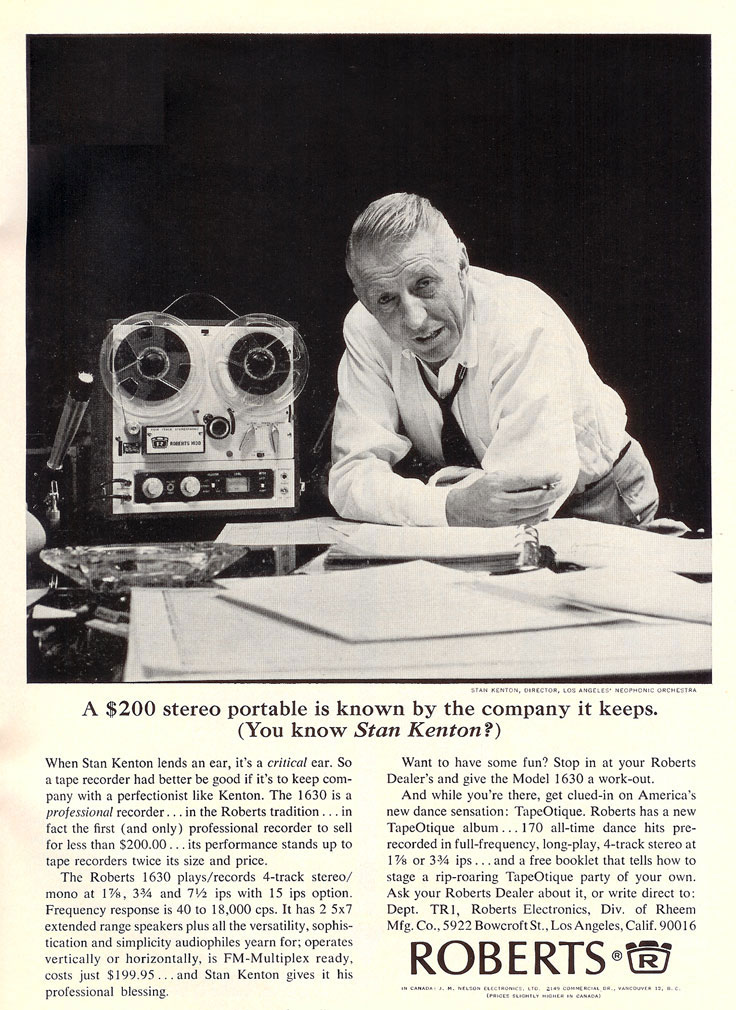
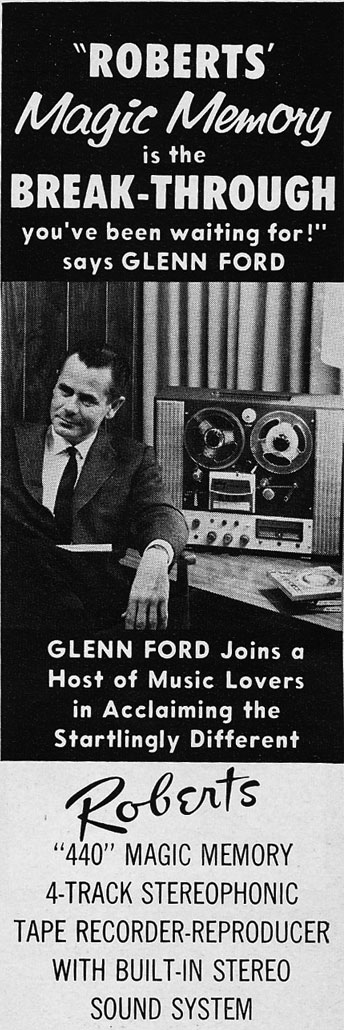
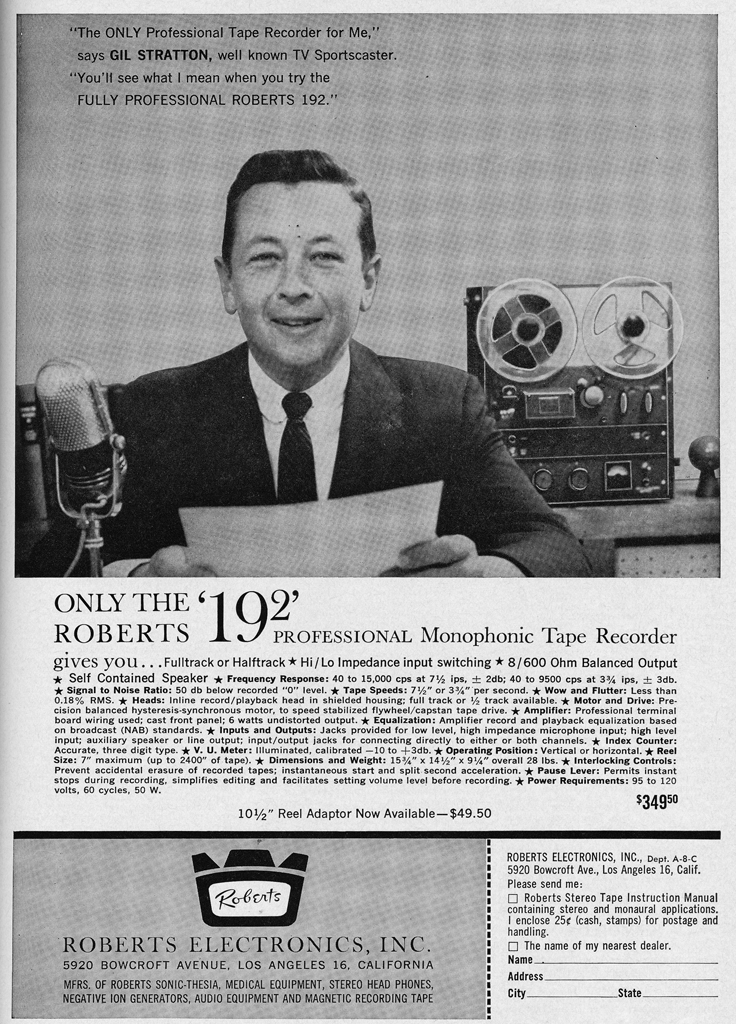
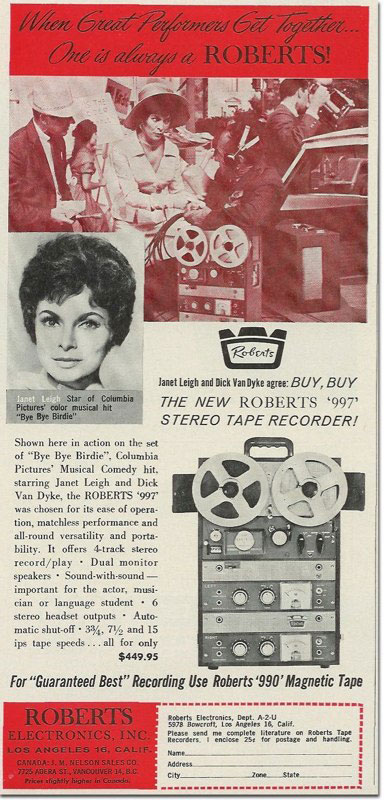
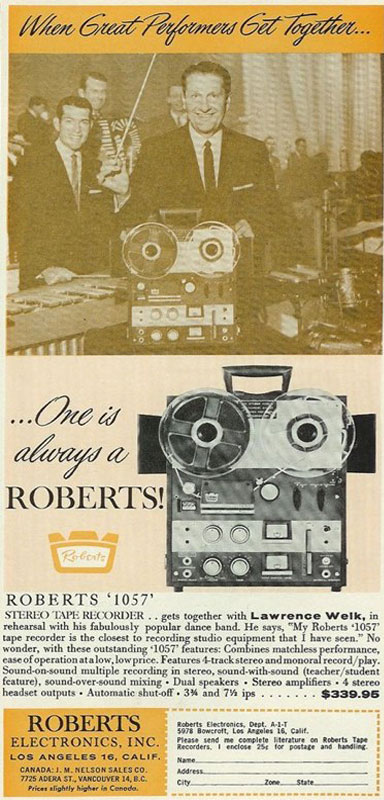
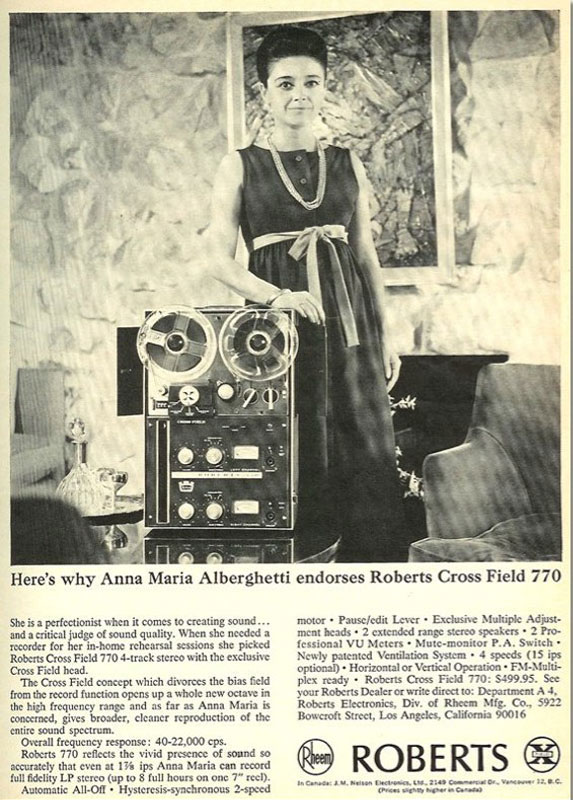


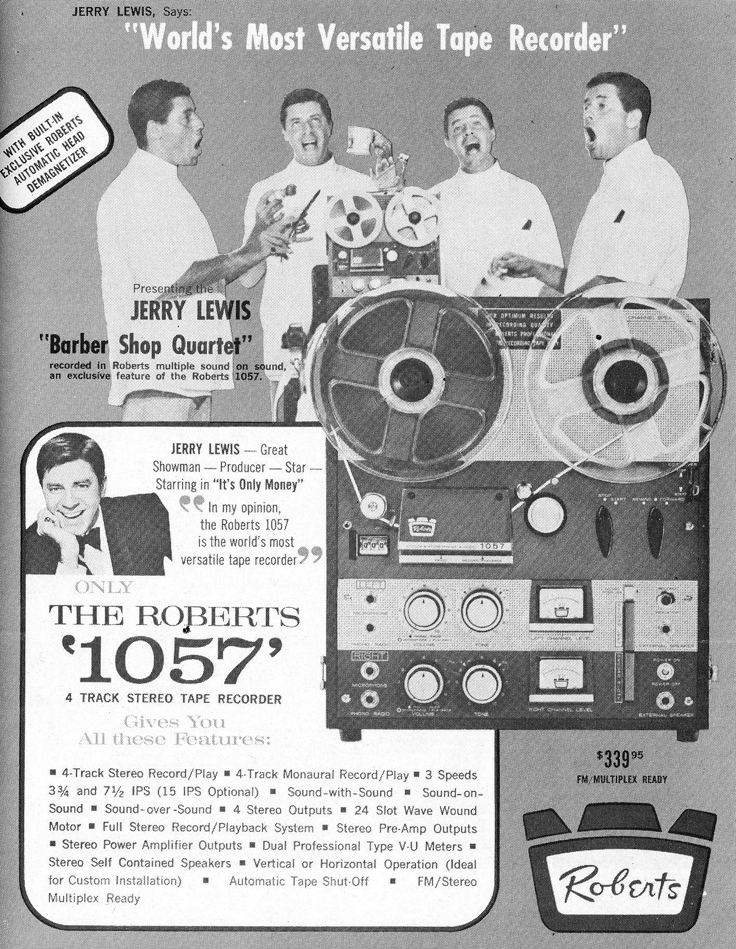
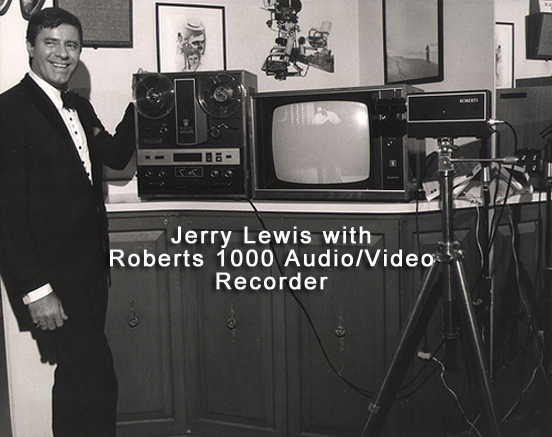
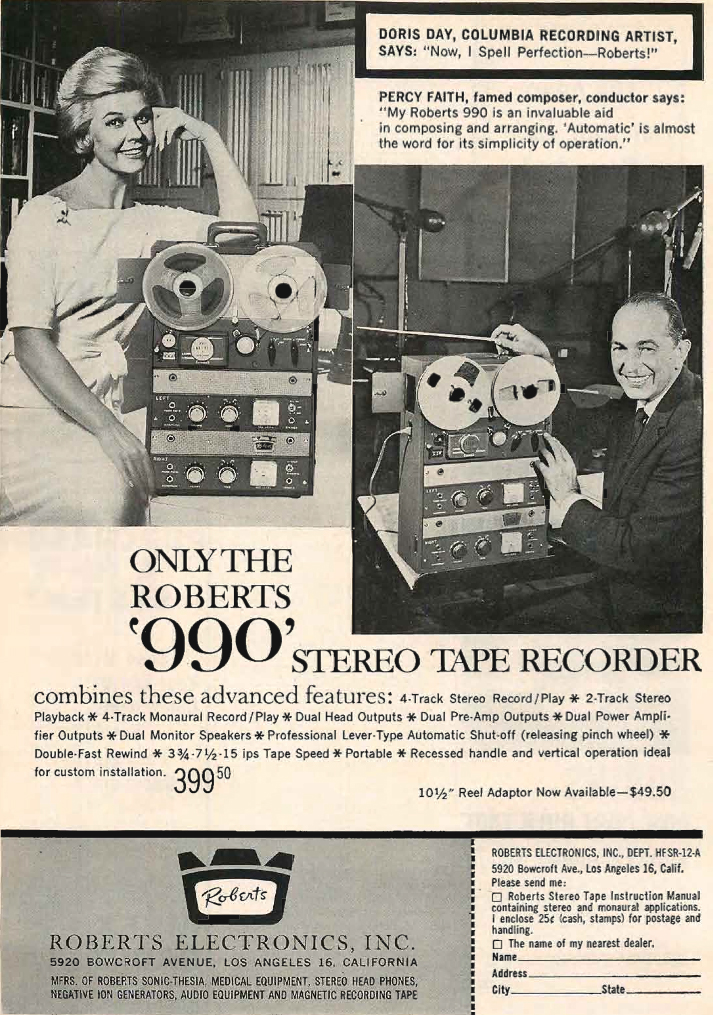
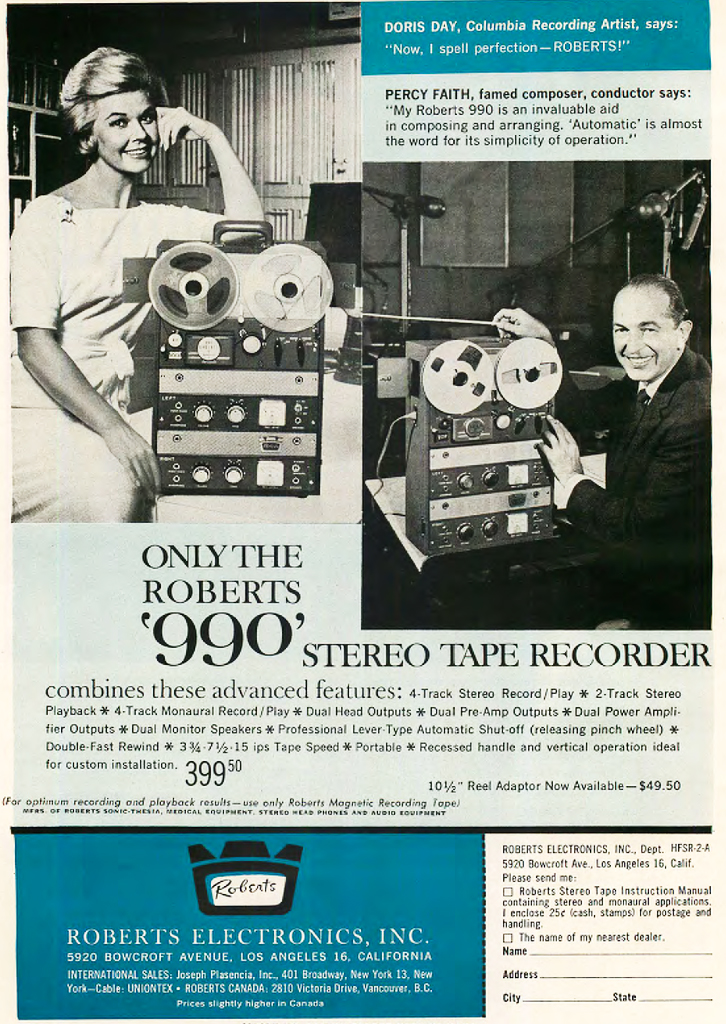
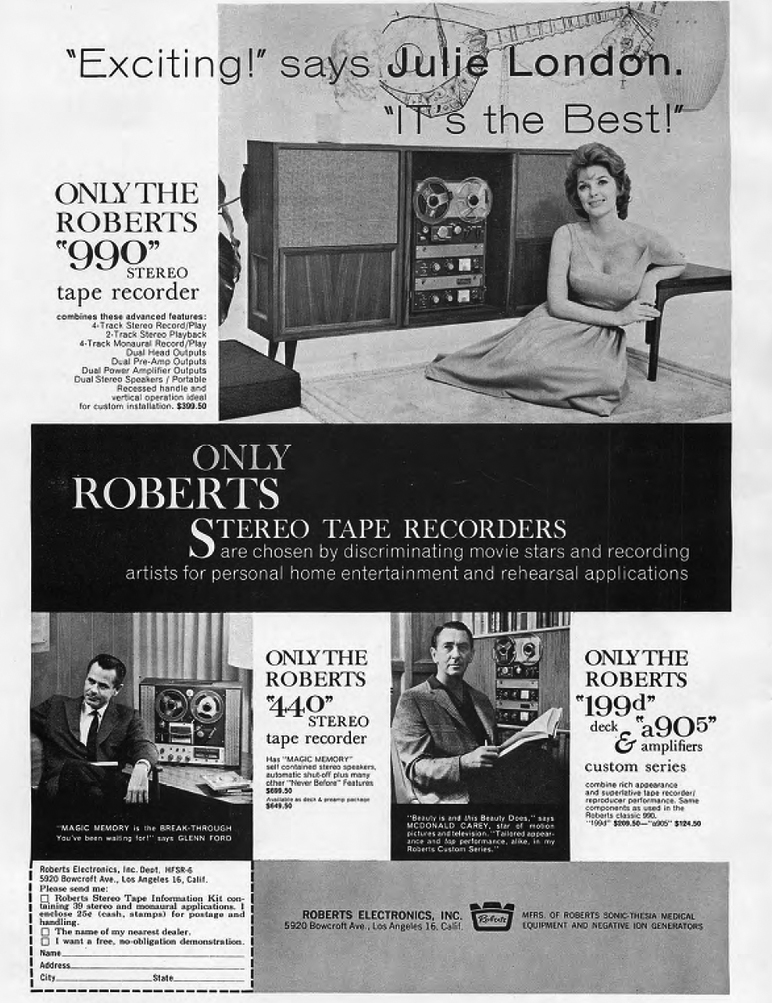
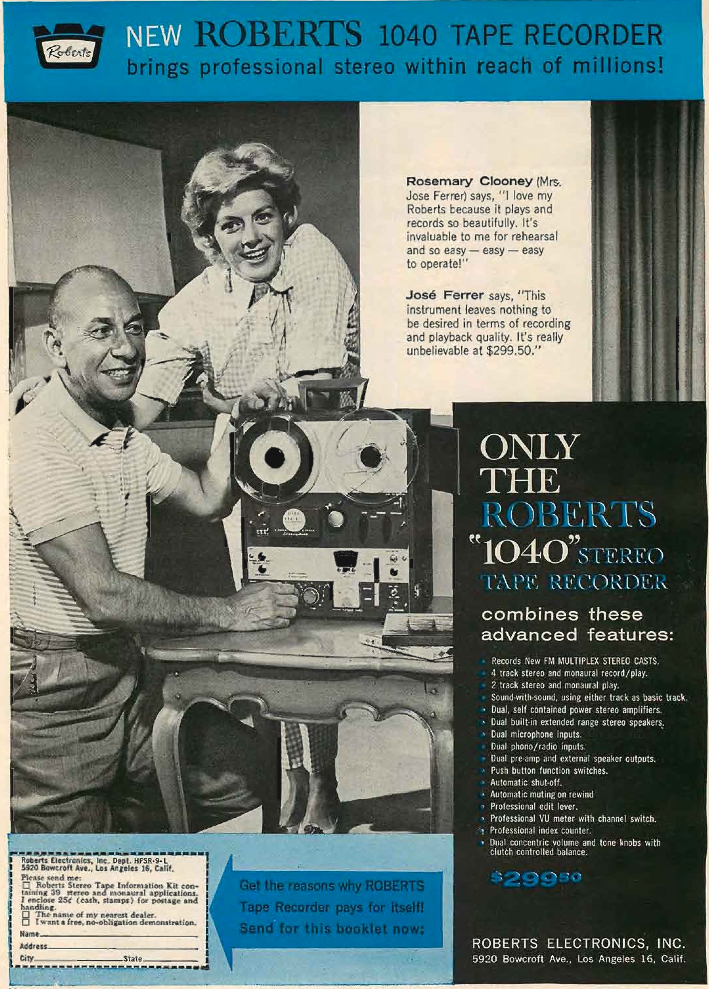

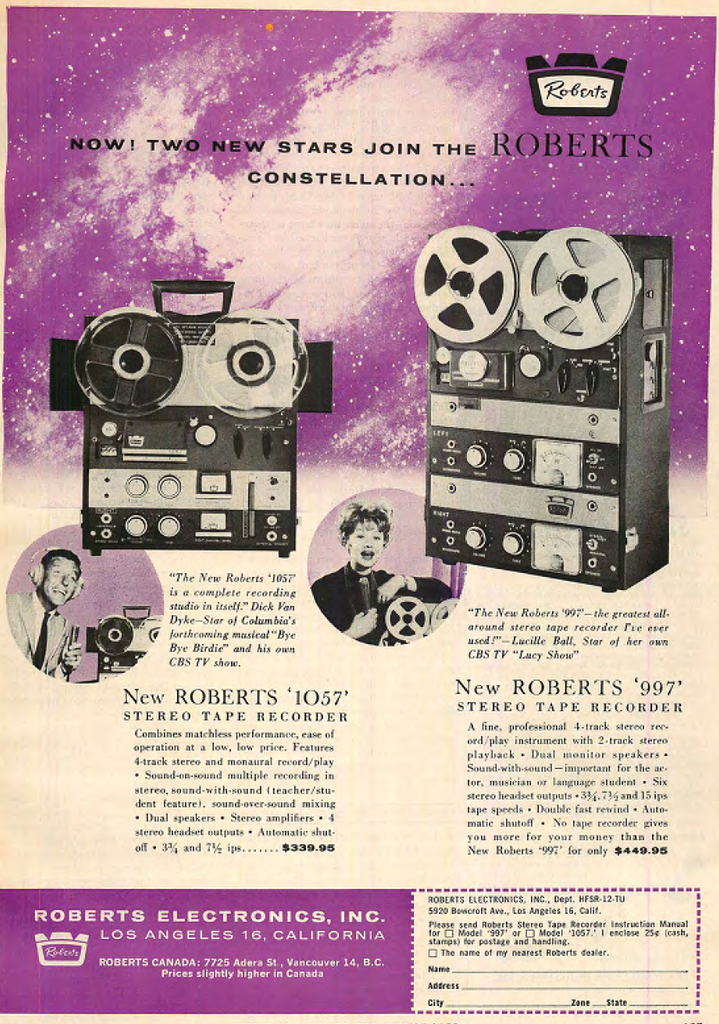
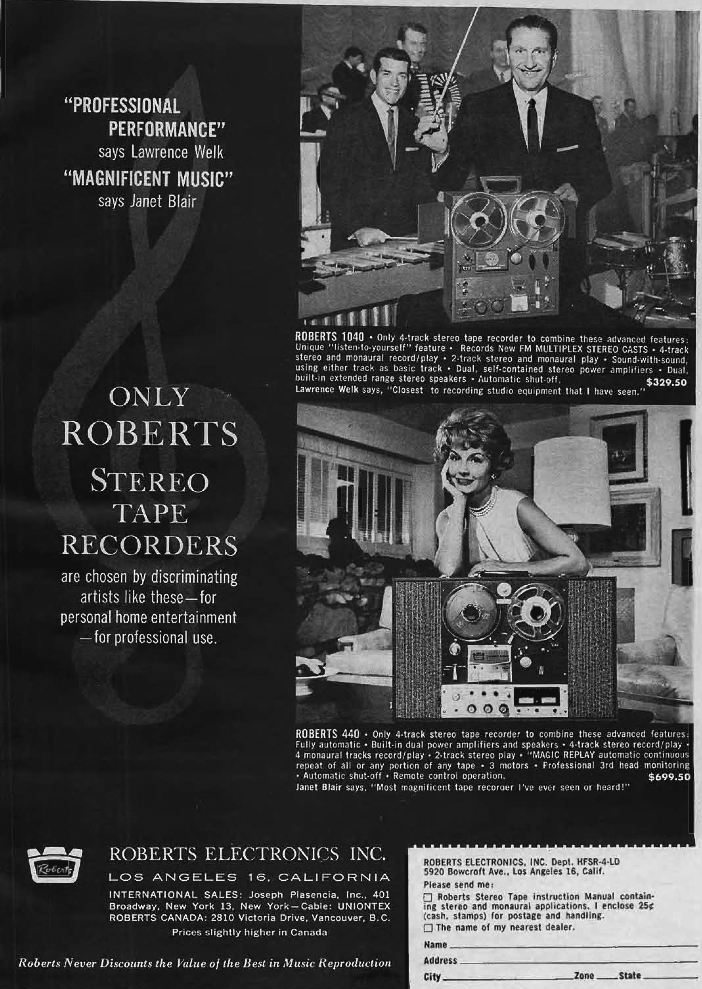
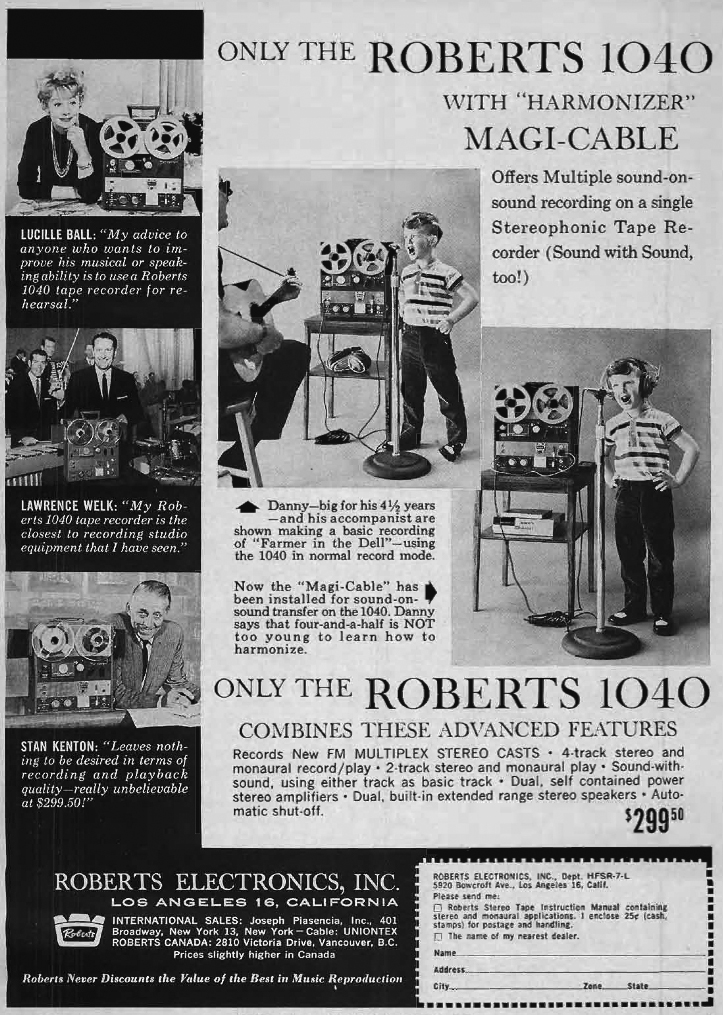
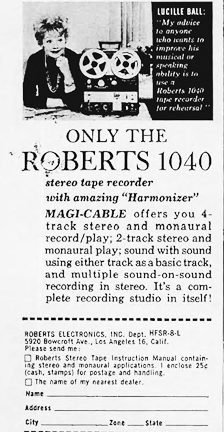
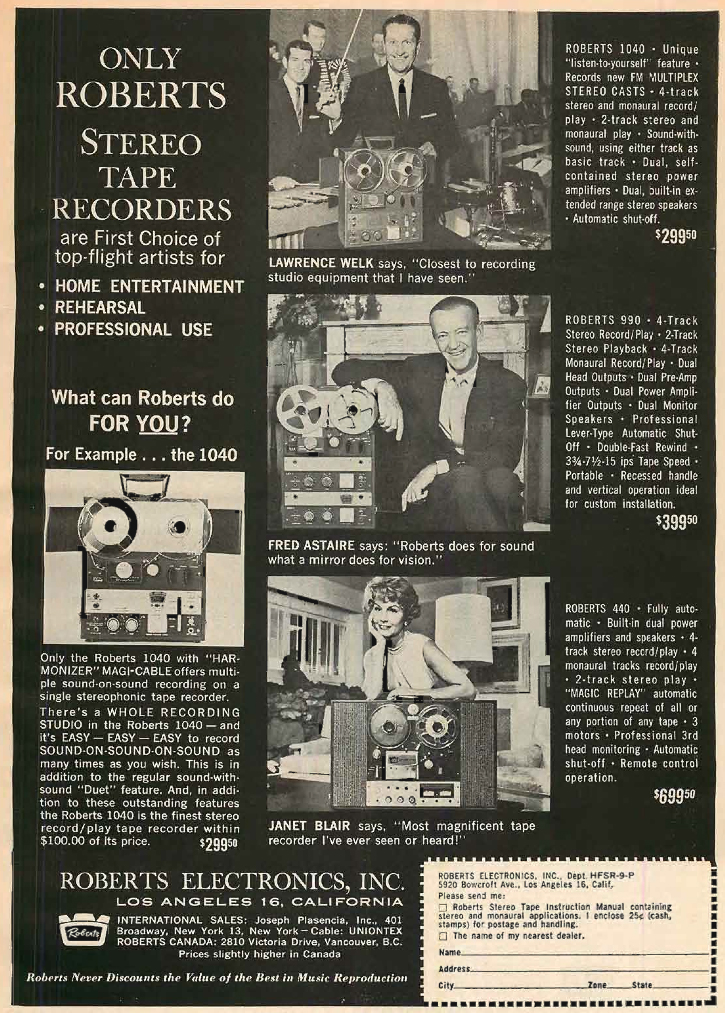
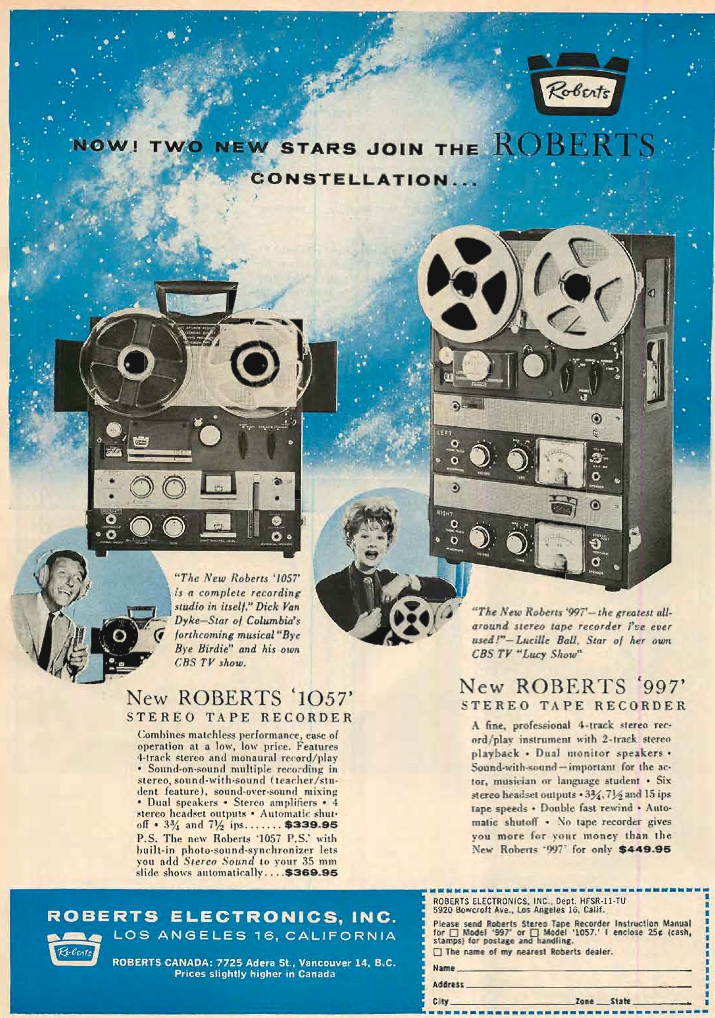
 In the late 1950's Congress allocated 4 billion dollars for educational resources in the US. Rheem Manufacturing Company (started in 1927 by
In the late 1950's Congress allocated 4 billion dollars for educational resources in the US. Rheem Manufacturing Company (started in 1927 by 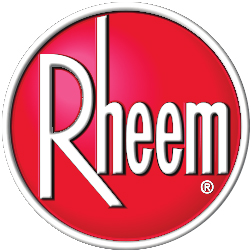 brothers Richard and Donald Rheem as a supplier of packaging to the petroleum industry and now manufacture of air conditioning, heating and water cooling products). Rheem wanted to participate in supplying educational products and receive a portion of the funds. In 1959, Jack Davis approached Robert Metzner about Rheem acquiring interest in Califone. Rheem acquired a substantial majority interest in Califone Corp., in 1959, and a minority interest in Roberts Electronics, Inc., in 1961, and formed the Rheem Califone-Roberts Division, selling tape recorders, teaching machines, sound systems and other related equipment for the home, schools and industry. Robert G. Metzner was retained as a consultant and continued with Rheem/Califone/Roberts. Robert Craig left and founded Craig Electronics. VIDEO
brothers Richard and Donald Rheem as a supplier of packaging to the petroleum industry and now manufacture of air conditioning, heating and water cooling products). Rheem wanted to participate in supplying educational products and receive a portion of the funds. In 1959, Jack Davis approached Robert Metzner about Rheem acquiring interest in Califone. Rheem acquired a substantial majority interest in Califone Corp., in 1959, and a minority interest in Roberts Electronics, Inc., in 1961, and formed the Rheem Califone-Roberts Division, selling tape recorders, teaching machines, sound systems and other related equipment for the home, schools and industry. Robert G. Metzner was retained as a consultant and continued with Rheem/Califone/Roberts. Robert Craig left and founded Craig Electronics. VIDEO
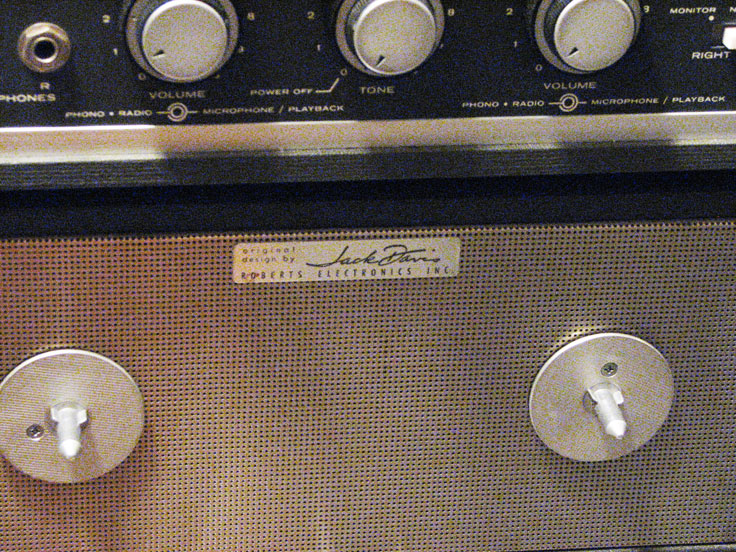
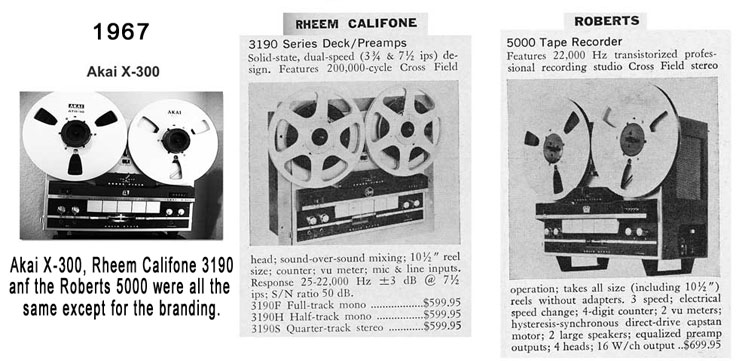
Jack Davis' signature (above left) appeared on a plaque on several of the Rheem Roberts tape recorders. Comparison of the same reel tape recorder branded by the three companies; Akai, Rheem Califone and Roberts
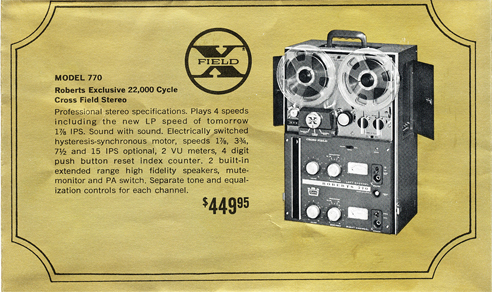
Roberts tape recorders were also known for the Crossfield head indicated by the "X" on the various tape recorders. VIDEO
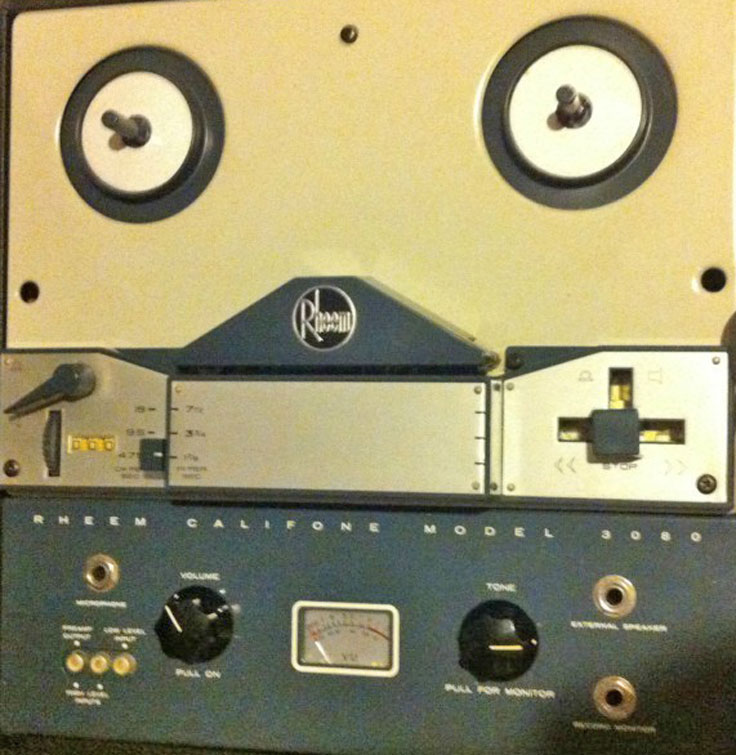
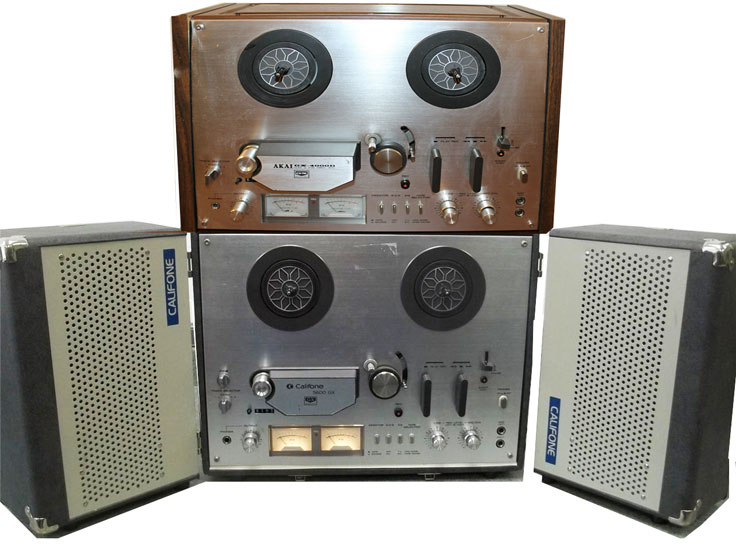
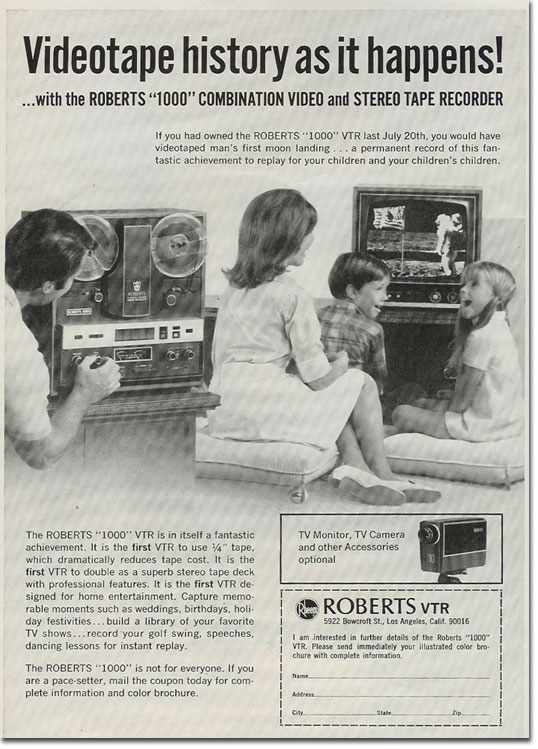
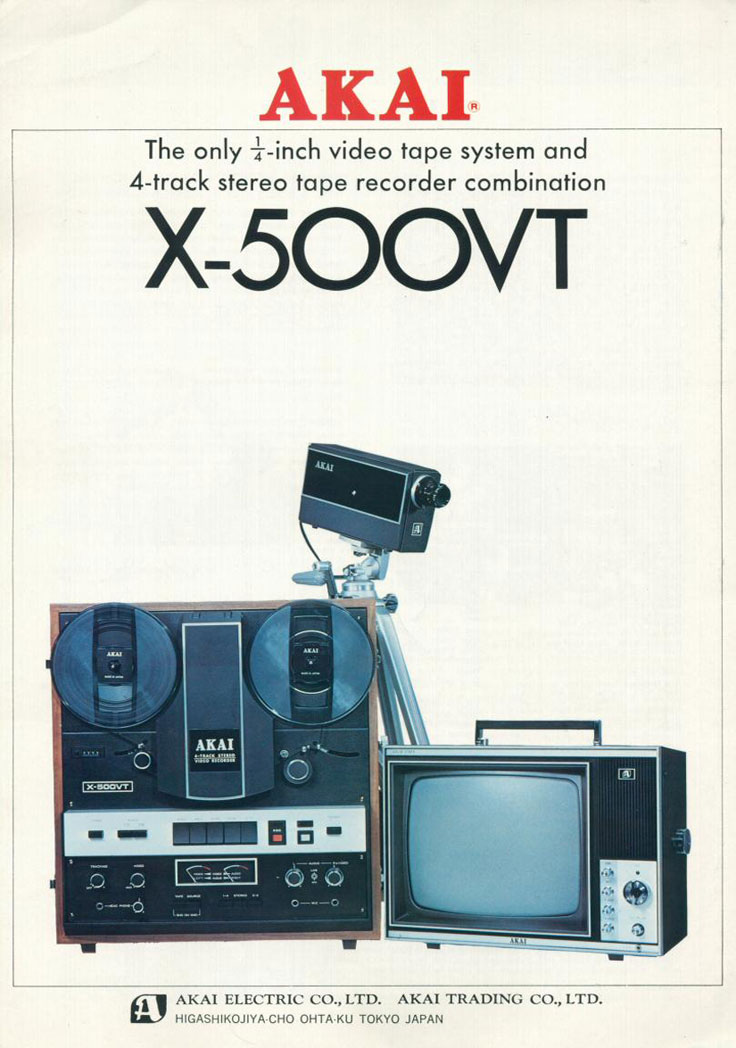
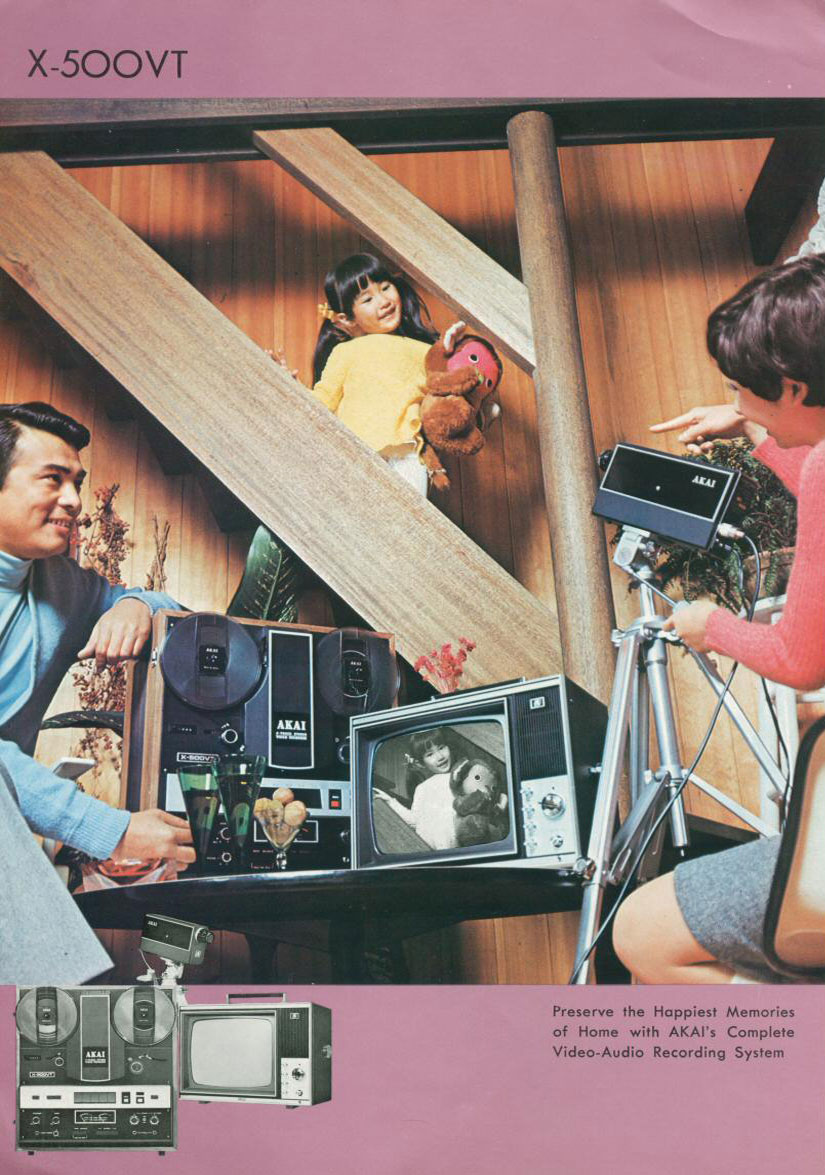
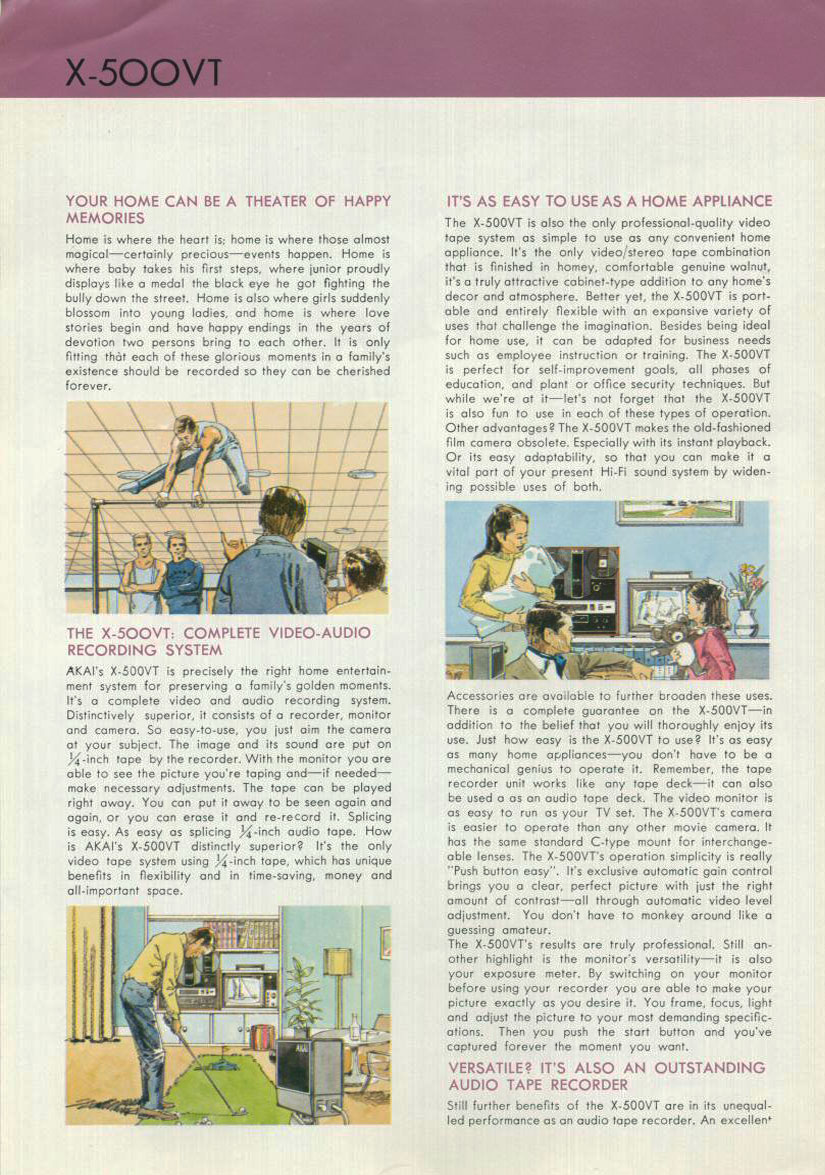
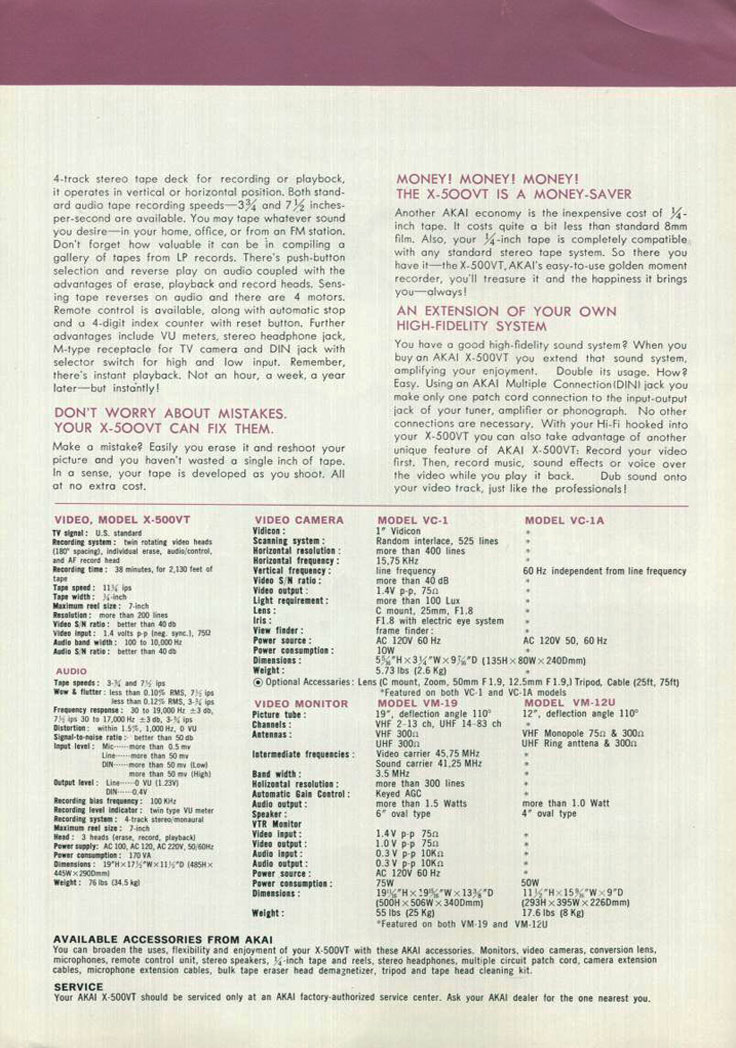
Rheem Roberts and Akai also released the Rheem Roberts 1000 which was a 1/4 track stereo auto-reversing audio reel to reel tape recorder with a built in black & white video tape recorder. It used the same 1/4" tape and when the tape was re-threaded would record and playback B&W video. Built by Akai, it was released under the Akai brand as the X-500VT
Robert G. Metzner Tape Mechanism Patents
Robert G. Metzner holds a total of 12 patents. Included are the reverse dial mechanism on the Roberts 400X (right). He also patented and licensed to Akai the Roberts 333X technology that combined reel to reel, cassette and 8-Track into one tape recorder (left) VIDEO
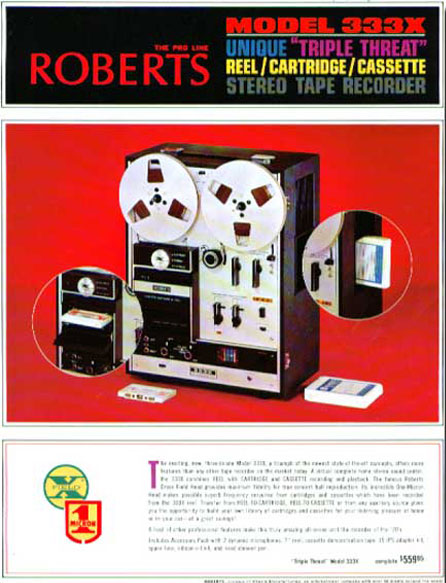
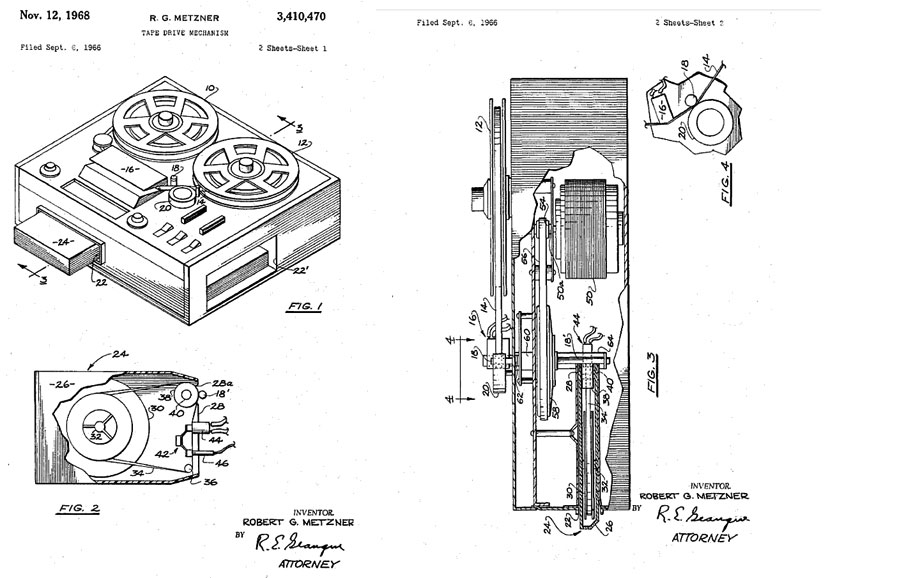
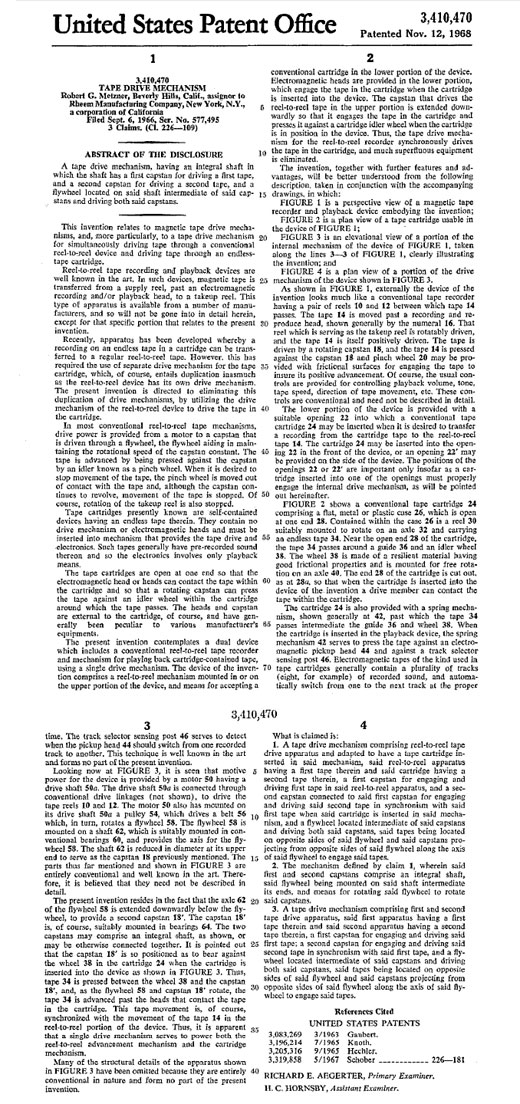
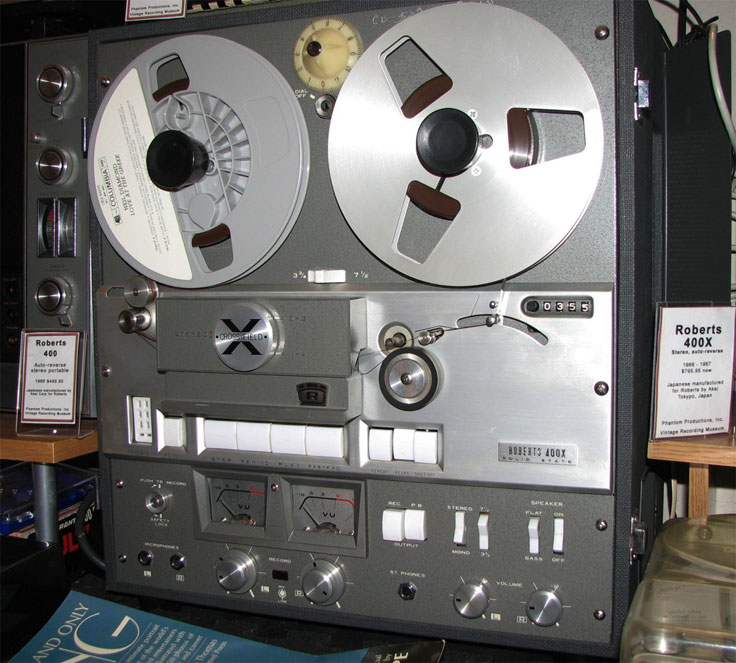
Akai Begins US Sales
Billboard July 3, 1971 - "Akai America will introduce a full line of tape players Sunday (27) at the Consumer Electronics Show, The Califone-Roberts division of Rheem Manufacturing Co. has entered into an agreement with Akai Electric Co., Ltd. of Japan that will allow certain tape products to be sold in the U.S. under both the Roberts and Akai brand names.
Under terms of the agreement, Roberts will continue to market the major part of the Akai made products under the Roberts label on an exclusive basis. 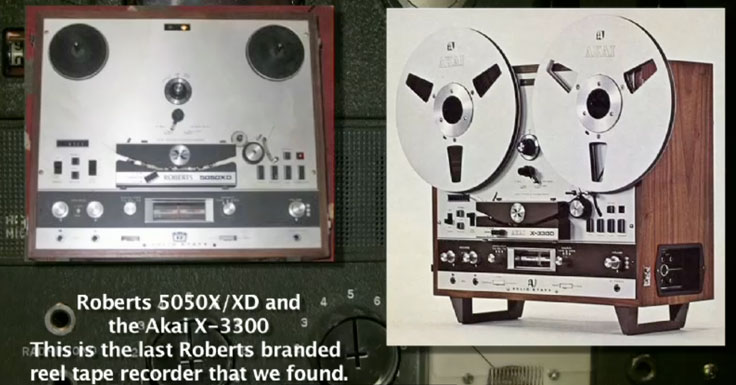
"The benefits to both parties this new agreement are numerous and mutually desired,." said Roberts president C.E.Phillips. From 1974 to 1985, Mr. Phillips was Executive Vice President and Director of Akai America, Ltd.,
The last Roberts reel tape recorder we found was sold in 1973. It was the Roberts 5050X/XD.
Other Patents
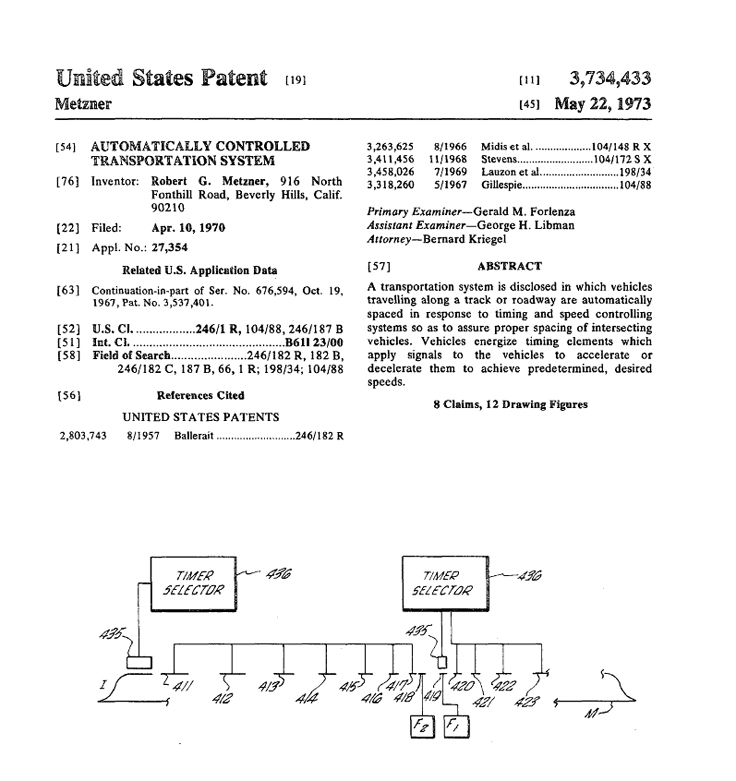 That same year (1973) Robert Metzner patented an automobile speed and timing spacing transportation system. (Photo to left). Work on this began back in 1949 with his young son (Dr. Richard Metzner) with the plan to embed steel rods under streets that would interact with magnetic technology in the car to direct the car to a destination without a driver participating.
That same year (1973) Robert Metzner patented an automobile speed and timing spacing transportation system. (Photo to left). Work on this began back in 1949 with his young son (Dr. Richard Metzner) with the plan to embed steel rods under streets that would interact with magnetic technology in the car to direct the car to a destination without a driver participating.
He is known as the inventor of the Metzner Starlight turntable (below). This work on turntables was influenced by Metzner interest in the Japanese Akai motors. VIDEO
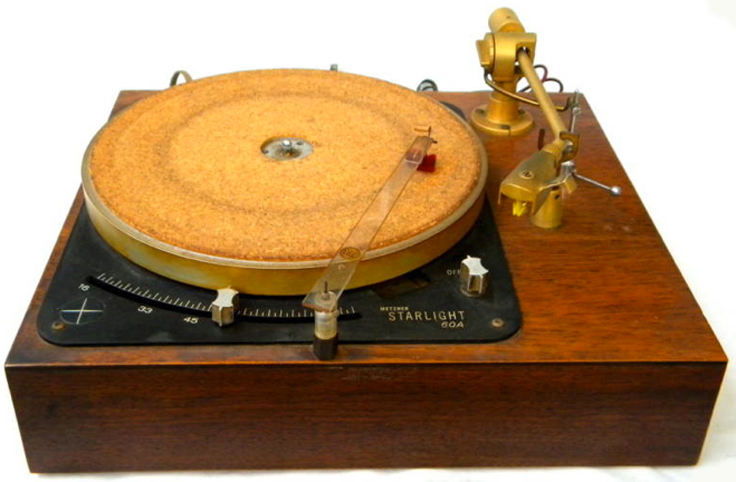

Robert G. Metzner's Hybrid Automobile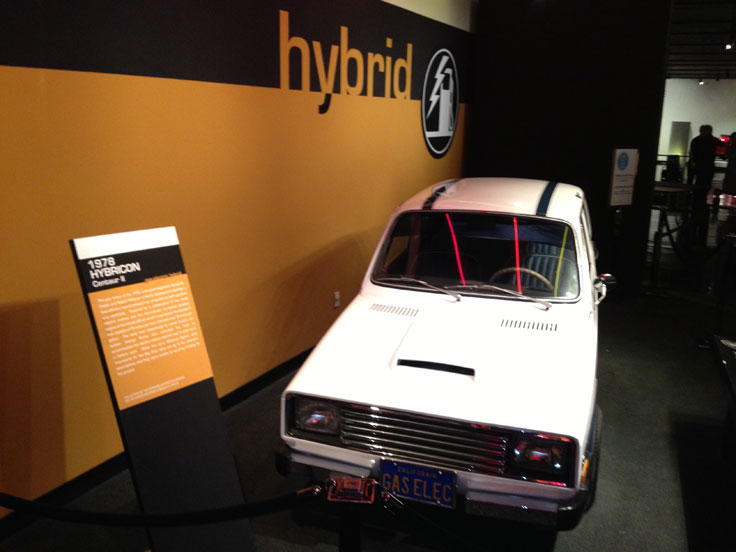
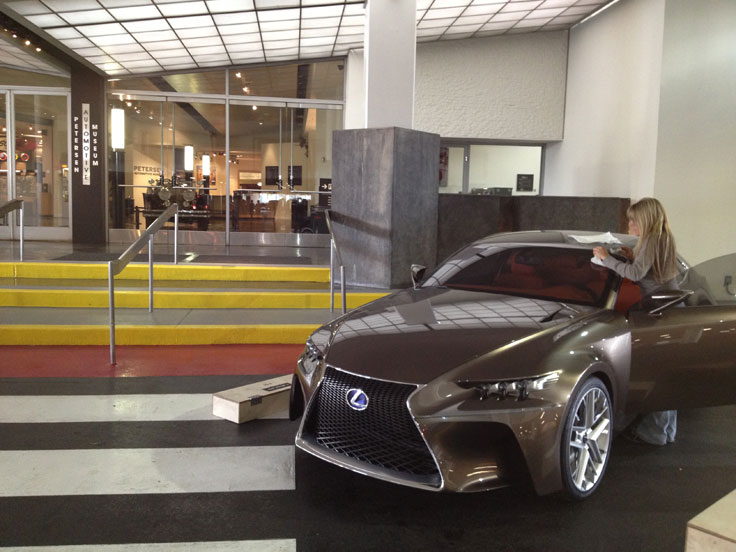
Hybrid Hybricon Centaur II
After selling part and then all of Califone and Roberts Recorders to Rheem, Robert G. Metzner continued with the company and contributed many more innovative electronic designs. He was creating in a number of other areas as well. He built a hybrid car with Gerald M. Fields. The car technology was patented as the Hybrid Hybricon Centaur II in 1978. This was an electric/gas automobile which functioned like the Toyota Prius. In 1978 Metzner drove the car to Detroit and spent several days demonstrating it to the big three auto manufacturers. They all turned it down as impractical given the low price for gas back then. Mr. Metzner told us that the year after his patent expired, Toyota began their work on the Prius.
Chris & Martin Theophilus visited the Peterson Automotive Museum in LA where Metzner donated the hybrid car. VIDEO
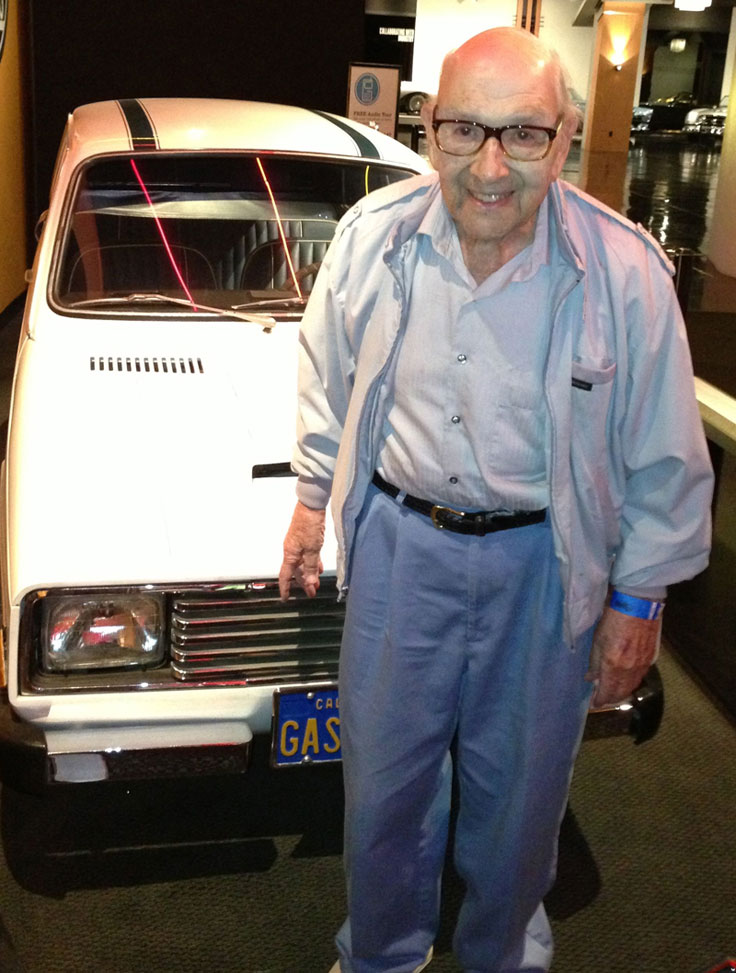
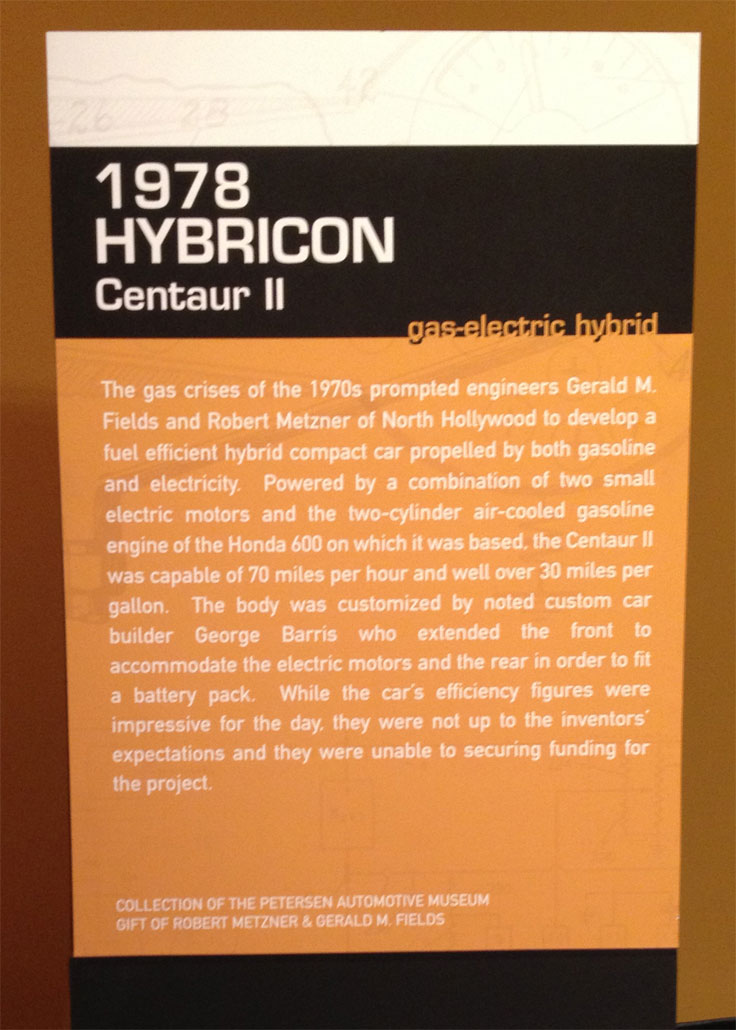
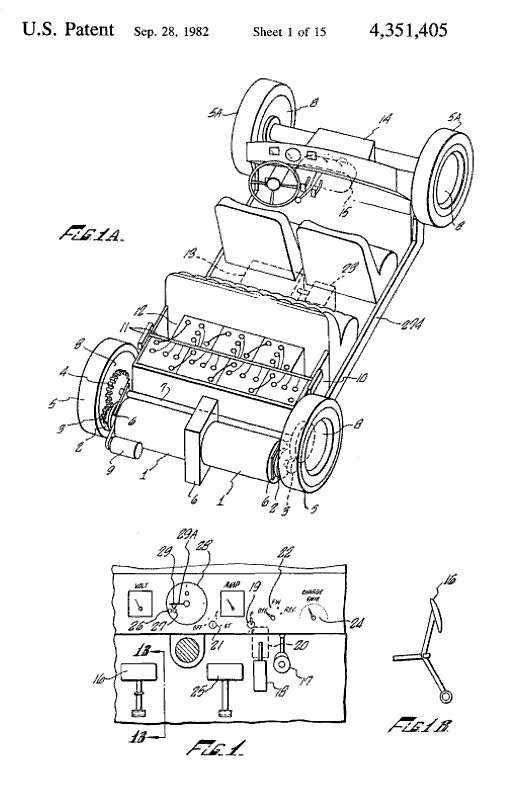
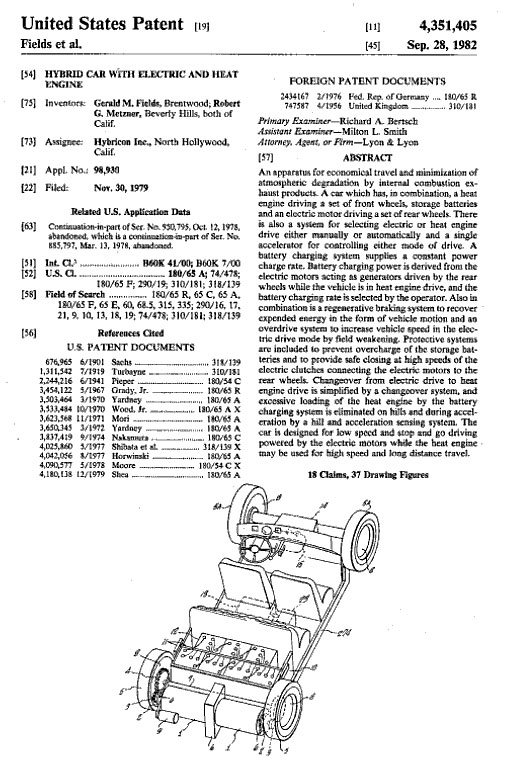
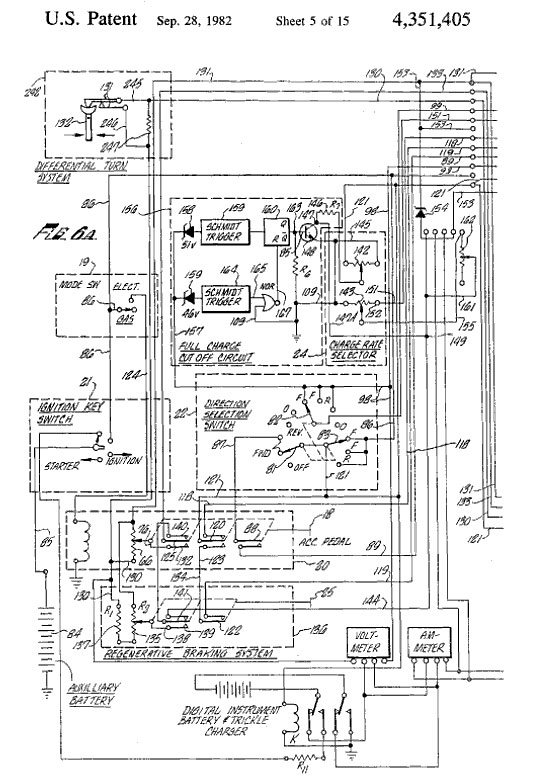
Robert G. Metzner's wife Esther took a sculpture class and the process greatly interested Robert. Over the years he built numerous beautiful sculptures some of which are on permanent display at Caltech and UCLA. Many more intricate sculptures are displayed around their home.
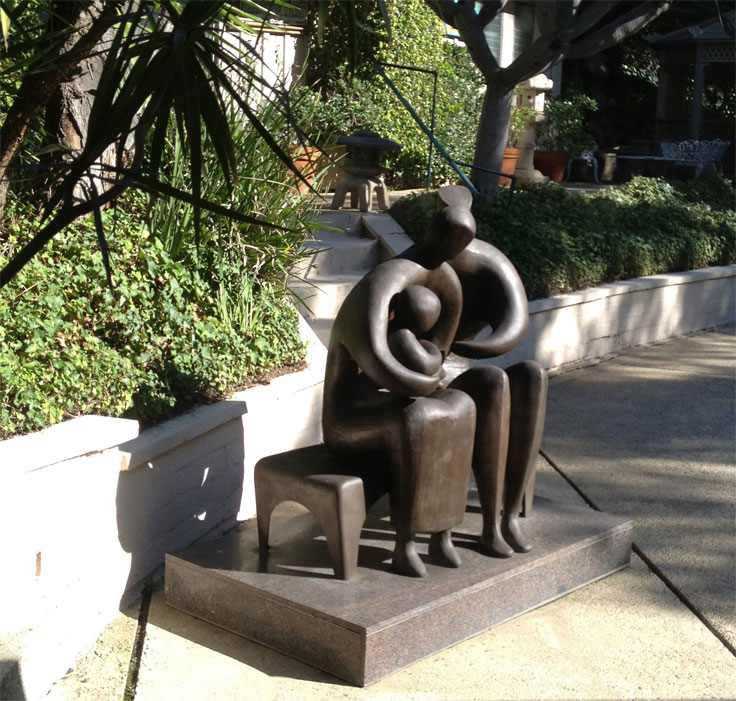
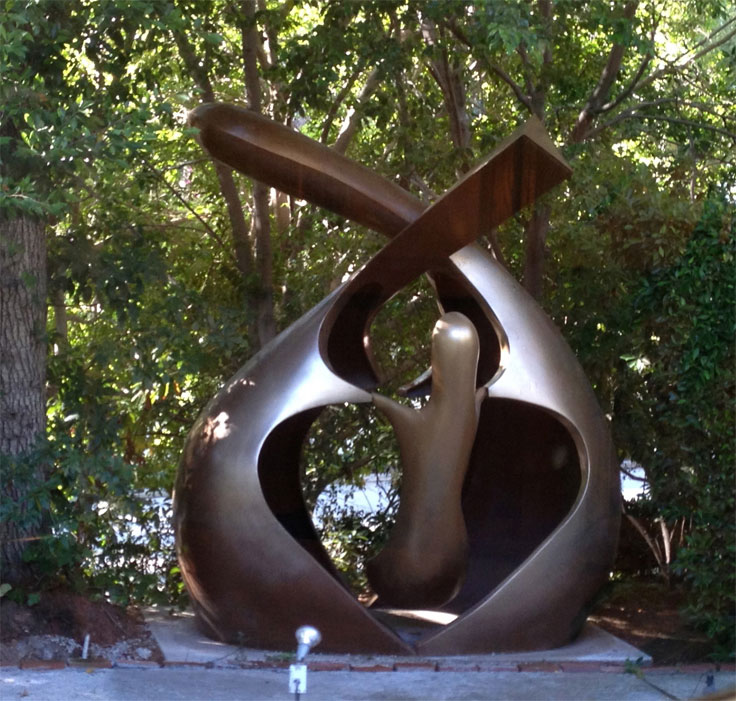
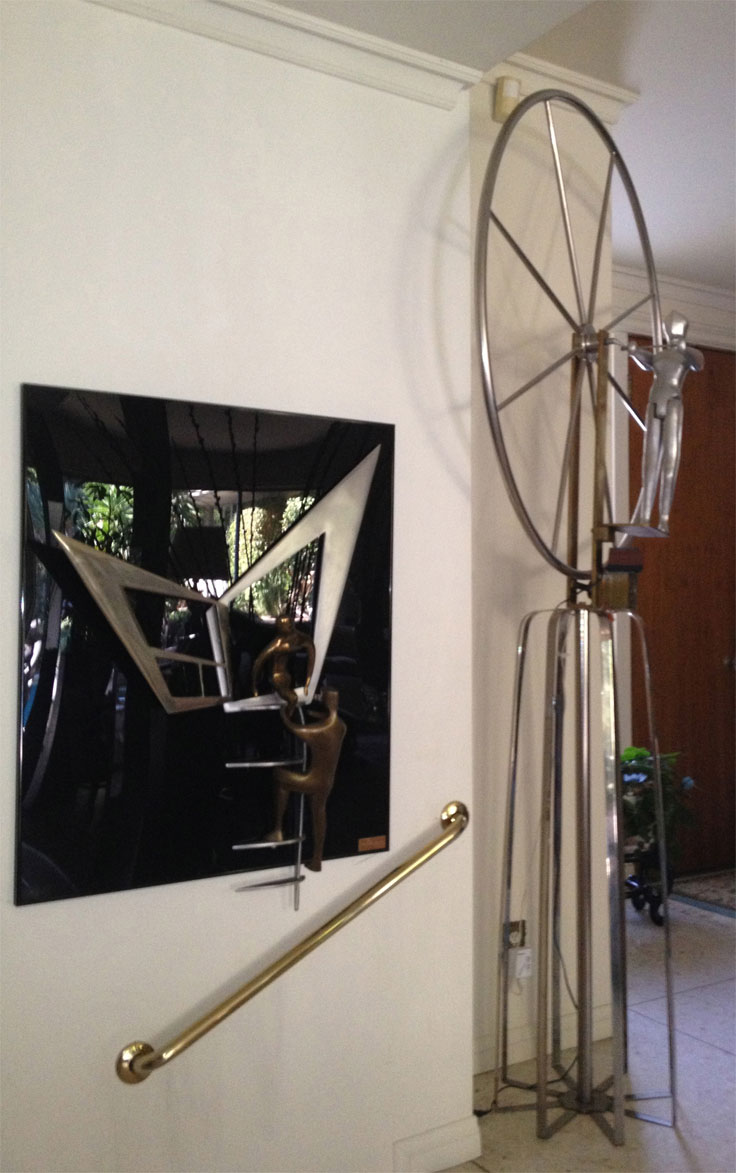
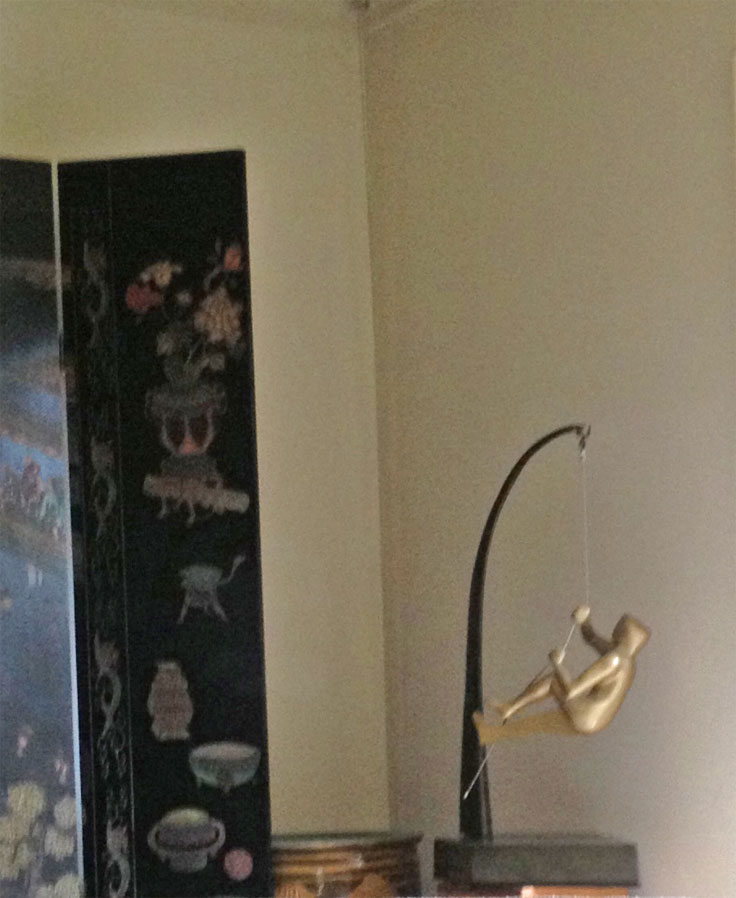
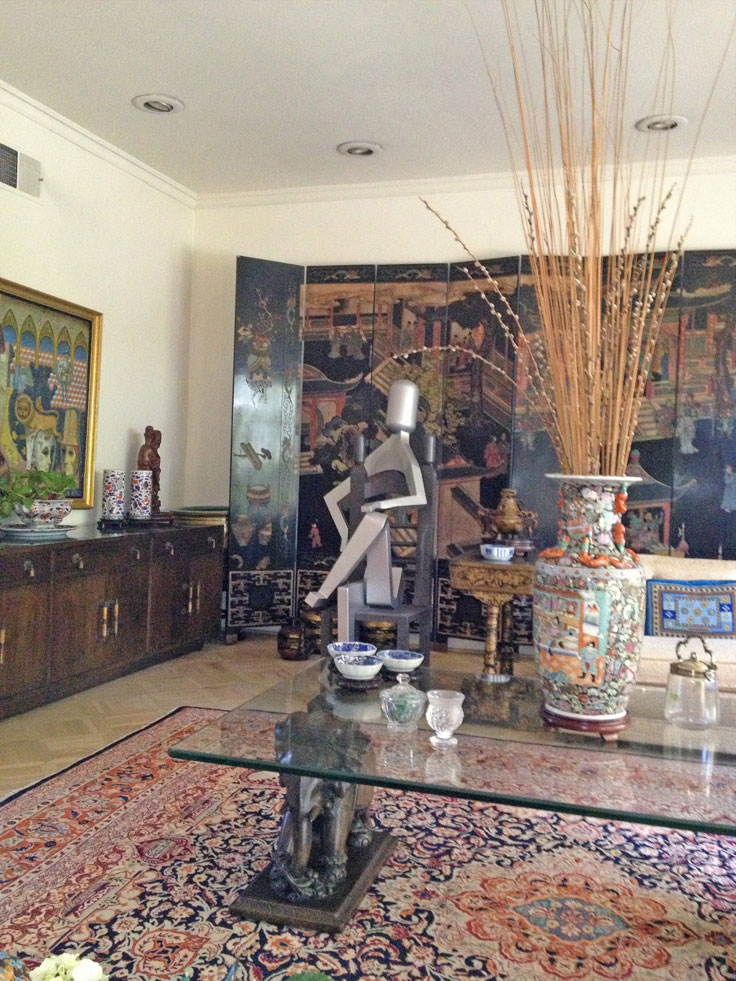
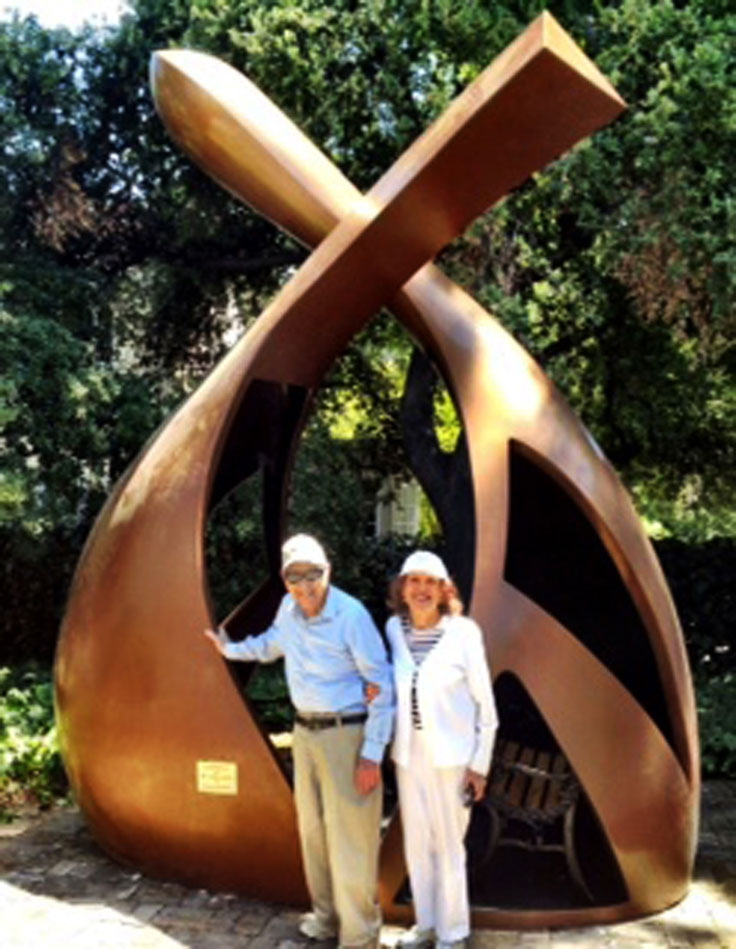
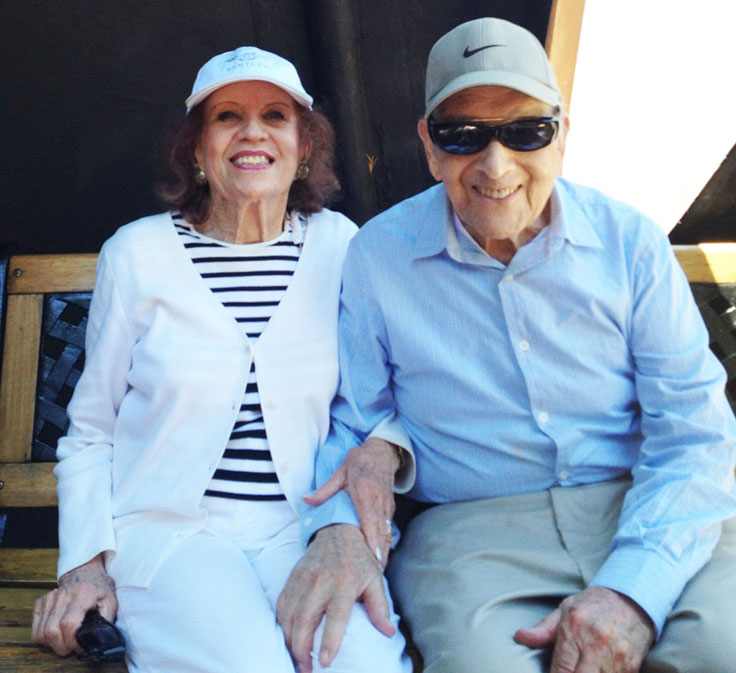
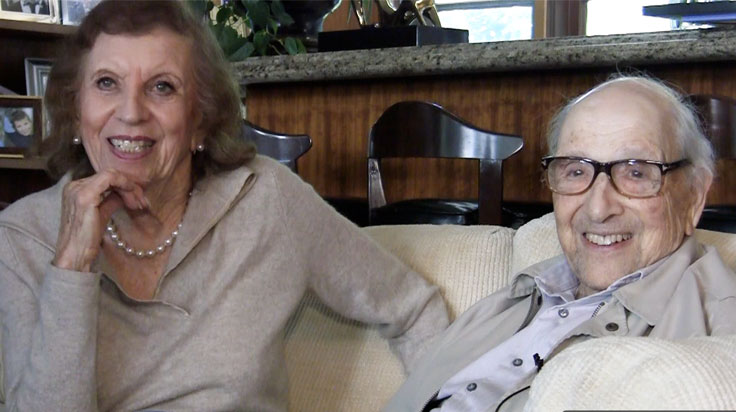
Esther and Robert Metzner with Robert's sculpture "Convergence" VIDEO Richard Metzner's comments about his DAD & Mom
More about the Roberts Akai connection:
(from the Akai prepared history summary) By 1948, Akai had started producing and selling phonograph motors. At this time recording technology was changing rapidly and there was demand for higher precision record players. Akai responded to this demand by continually upgrading the technology of their phono motors.
By 1951, they had developed the C-5 Variable Speed Motor, which produced minimal noise and vibration and proved extremely popular with audio enthusiasts of the period.
The C-5 aroused considerable interest in the US as well and this led Saburo to change his market perspective.
In 1953-4 Akai was one of the few medium sized companies to export goods without going through a wholesaler. Saburo had advertised in the American technical journal "Electronics." The headline "Why not buy Akai technology?" generated inquiries from 5 interested companies. (story differs a bit, however Akai may have thought the inquiry came from the article instead of Metzner's direct motor inquiry)
One of these companies was a producer of audiovisual equipment for education, Roberts Electronics founded by Robert G. Metzner.
The company presented Saburo with overwhelming demand for anything Akai was producing and business expanded rapidly for both as Roberts Electronics began using Akai products.
Then in answer to a query from Akai about how their products were being used, Roberts sent back a tape recorder.
Technicians at Akai looked over the model, made one of their own and quickly sent this back to their US client. Roberts replied in no time.
Roberts asked Akai to manufacture the completed tape recorders and said that they would take charge of sales.
In 1954 Akai made its first foray into the tape recorder field by bringing out the AT-1 model, a tape recorder kit. This was followed in 1956 by their first independently developed tape recorder, the 900.
The model was well received and orders started coming in fast.
Saburo decided to take a trip to the U.S. to further study the market. He was completely taken aback by the immense market he found there, and returned to Japan with the realization that if you had a good product, you could be sure of selling it in America.
From then on the firm focused on expanding their facilities and gearing their production towards improving quality.
In 1957 Akai unveiled a deluxe version of its high grade tape recorder. With the deluxe stereo model which was brought out the following year, Akai had acquired a firm position in the domestic market. In the same year, Saburo took over from his father as president.
Although well established in terms of capital and selling power by 1960, the firm had concentrated on investing the market with low-price tape recorders through its volume production system. Akai was now at a turning point. The company would no longer view the tape recorder as simply a machine for the production of sound; the tape recorder was to be refined as a device for the pursuit of sound quality.
Throughout the early '60's Akai produced models that made their reputation as a premier producer of audio tape recorders.
In the US, OEM-supplied Akai products were being marketed under the Roberts brand name. Despite the wide range of tape recorders available from US manufacturers, Akai sales were exceptionally high. On the strength of this success, Akai decided to expand its sales network into other countries, first moving into Southeast Asia and then the Middle East and Europe.
Akai debuted the M-7 model tape recorder in 1962 and its successor the M-8 in 1964. Equipped with the then new X'Field magnetic recording system (licensed to Akai by Tandberg), these two models gave superior frequency response which resulted in a vast improvement in tape economy.
Together the M-7 and M-8 (Roberts 770X) recorded sales of over 160,000 units in four years and thus established Akai in an unshakable position in the tape recorder field. The X'Field Head development brought Akai sudden world renown, and the company went on to produce many top selling models.
Akai halted production of open reel decks in 1985 after the release of the GX-747, thirty one years after Akai had begun sales of its AT-1 tape recorder kit. To take the place of open-reel deck production, Akai poured all of its energies into the development of cassette decks.
Back to Stories Main Page
